If you’re busy, hungry, and trying to eat smarter, these easy low-carb lunch recipes are your new lunchtime best friends. They’re designed to be quick (15–25 minutes), portable for work, and built to keep you satisfied through the afternoon slump. Whether you’re meal-prepping or assembling last-minute, these recipes focus on proteins, good fats, and veggies with fewer starchy carbs — perfect for weight goals or steady energy. For evidence-based context on low-carb approaches and health effects, see Mayo Clinic and Harvard’s Nutrition Source.
Why choose easy low-carb lunch recipes (benefits + macros)
If you’re juggling work, errands, or just A Very Full Life™, choosing easy low-carb lunch recipes isn’t about being trendy — it’s about practical wins. Lowering carbs at lunch (and focusing on protein + healthy fat) can reduce afternoon energy dips, cut mindless snacking, and make meal prep far less painful. Below I’ll unpack the real benefits, what “low-carb” typically means in practice, and who tends to benefit most — plus a short, responsible caution about individual needs.
Health & practical benefits (satiety, stable energy, simpler meal prep)
Satiety and appetite control
Switching to easy low-carb lunch recipes often raises the protein and healthy-fat content of your meal — and protein + fat are the heavy lifters when it comes to keeping you full. When your lunch delivers satisfying protein (think 20–35 g) and a portion of fat (avocado, olive oil, nuts), you’re less likely to reach for vending-machine carbs at 3 PM. Studies and clinical guidance show that many people experience reduced hunger on lower-carbohydrate plans, which supports weight management for some. (1, 2)
More stable energy & blood-sugar control
Meals lower in fast-digesting carbs blunt sharp post-meal blood sugar spikes and crashes, which reduces that afternoon “wired then tired” feeling. For people with insulin resistance or type 2 diabetes, cutting carbs at meals can meaningfully improve blood glucose control — but this should always be done with clinician oversight if you take glucose-lowering medication. (3, 4)
Simpler, faster meal prep
Practicality is underrated. Many easy low-carb lunch recipes lean on pantry staples (canned tuna, rotisserie chicken, eggs, frozen riced cauliflower) and assembly rather than long cooking. That means 15–25 minute lunches that are actually realistic during a busy weekday. Batch-cook a protein on Sunday, chop a few veggies, and you’ve got multiple grab-and-go lunches ready. Diet guides and recipe experts repeatedly call out these shortcuts as key to long-term consistency. (5)
Macros explained: what “low-carb” means (net carbs, typical ranges for lunch)
Net carbs — the quick definition
Net carbs are the amount of carbohydrate that impacts blood glucose. A common and practical way to calculate them is: total carbs − fiber = net carbs (some people also subtract sugar alcohols where appropriate). Using net carbs helps you estimate how “carb-heavy a food will be in practice. (6)
How low is “low”? — practical ranges
There’s no single universal cutoff, but common frameworks are:
- Very low carb / ketogenic: often < 20–50 g total carbs/day (much lower per meal). (7)
- Moderate low-carb: up to ~130 g carbs/day (still much lower than the typical Western intake).
For lunch specifically, a practical target for many people eating easy low-carb lunch recipes is ~10–30 g net carbs per meal. That range keeps the meal low enough in carbs to avoid big blood-sugar swings for many people, while still allowing some non-starchy veggies or small fruit portions. Adjust based on your overall calorie/carbohydrate target and how strict you want to be. (8)
Macro balance to aim for (simple rule-of-thumb)
- Protein: 20–35 g — for fullness and muscle maintenance.
- Fat: moderate — adds satiety and flavor (olive oil, avocado, nuts).
- Carbs: 10–30 g net (primarily from non-starchy vegetables and small amounts of low-sugar fruit or legumes if you tolerate them).
Those targets are flexible; aim first for protein, then adjust carbs and fats to meet your energy needs and preferences.
Who benefits most (weight-loss goals, blood sugar management, busy professionals)
People are trying to lose weight
Because low-carb lunches commonly reduce appetite and calorie intake without meticulous calorie counting, many people find easy low-carb lunch recipes helpful for weight loss. Lowering carbs can translate into fewer cravings and smaller portion creep across the day. Clinical and review evidence support carb reduction as one effective tool among others for weight control — especially when high-quality proteins and healthy fats are prioritized. (9)
People managing blood sugar or type 2 diabetes
Low-carb meals often produce smaller post-meal glucose rises; studies show benefits for people with type 2 diabetes in reducing HbA1c and medication needs. But — and this is important — anyone with diabetes or on glucose-lowering drugs should work with their healthcare provider before changing carbs, because medications may need dose adjustments.
Busy professionals and parents (time-starved folks)
If your calendar is jam-packed, easy low-carb lunch recipes that use simple assembly and prepped components can be a game-changer. Minimal-cook recipes (mason-jar salads, charcuterie boxes, egg muffins) scale well for meal prep and reduce the daily decision fatigue of “what do I eat?” — a major behavioral win for consistency.
A short caution on individualization & medical supervision
Low-carb eating is not one-size-fits-all. People with certain medical conditions (pregnancy, some metabolic disorders, certain kidney issues), those on certain medications (especially insulin or sulfonylureas), or anyone with a history of an eating disorder should consult a clinician before adopting very low-carb patterns. Also, quality matters: low-carb doesn’t mean “all bacon and butter” — aim for whole foods, plant-based veggies, lean proteins, or healthy fats where possible. Harvard and other authorities emphasize choosing healthy protein and fat sources for long-term health. (10, 11)
Quick action steps (if you want to start this week)
- Pick 2–3 easy low-carb lunch recipes from the list (try a tuna-in-avocado, a Cobb salad, and zucchini frittata muffins).
- Batch-cook one protein (roast chicken or bake turkey meatballs) and one veg component (roasted cauliflower or riced cauliflower).
- Aim for ~20–30 g protein and 10–30 g net carbs per lunch this week — then tune based on how you feel.
Pantry staples for fast, easy, low-carb lunch recipes
Stocking a smart pantry turns easy low-carb lunch recipes from a nice idea into a weekday habit. When your cupboards and fridge have a handful of reliable proteins, low-carb veg, and a few smart swaps, you can assemble tasty lunches in 15–25 minutes without stress. Below are practical, actionable staples (with storage and usage tips) so lunch prep becomes fast, flexible, and fridge-friendly.
Protein picks (canned tuna/salmon, rotisserie chicken, eggs, tofu, deli turkey — quick cook options)
Why protein matters: a protein-focused lunch helps with satiety, mid-afternoon focus, and keeping your total calorie intake steady — all central goals of easy low-carb lunch recipes. Keep these on hand:
- Canned tuna & salmon — shelf-stable, high in protein and omega-3s; perfect for quick salads, stuffed avocados, or mixed with a spoonful of mayo + mustard. Canned fish is a budget-friendly, time-saving cornerstone. (12, 13)
- Tip: Buy one or two higher-quality tins (wild salmon, low-mercury tuna) and one budget multipack for regular use.
- Rotisserie chicken / pre-cooked chicken — shredded chicken is incredibly versatile (Cobb bowls, wraps, quick Caesar salads). Rotisserie shortcuts shave prep time and scale well for meal-prep boxes. (14)
- Tip: strip meat off the bone and store in 3–4 portion containers for grab-and-go lunches.
- Eggs (hard-boiled or refrigerated boiled) — cheap, protein-dense, great for egg salads, mason-jar salads, or sliced on top of greens. Hard-boiled eggs last ~1 week refrigerated and are one of the quickest building blocks for easy low-carb lunch recipes.
- Tofu & tempeh — excellent plant-based options: press tofu ahead for extra texture and quickly pan-sear for salads or bowls. Firm tofu keeps ~3–5 days once opened (stored in water; change water daily).
- Tip: freeze tofu, then thaw for a chewier, meatier texture.
- Deli turkey / roasted turkey breast — pre-sliced deli meats are fast and protein-packed — use in wraps, grain-free bowls, or simple salad toppers. Choose low-sodium varieties where possible.
Quick protein prep hacks
- Batch-cook 4–6 chicken breasts or a tray of turkey meatballs on Sunday.
- Roast a couple of salmon fillets and portion for 2–3 lunches.
- Keep a tin of tuna and 6 hard-boiled eggs as emergency lunch backups.
(Protein references: high-protein pantry picks and convenience items recommended by dietitians and meal guides.)
Low-carb veggies & produce (leafy greens, cruciferous veg, zucchini, cucumber, avocado)
Vegetables form the volume and micronutrient backbone of easy low-carb lunch recipes. Pick veggies that are low in digestible carbs, versatile, and fast to prep or eat raw.
Top low-carb picks & why they’re useful
- Leafy greens (spinach, romaine, arugula, Swiss chard) — extremely low in carbs per serving, great as salad bases or warm wilted greens. Two cups of raw leafy greens = ~1 serving of vegetables per USDA guidance. (15)
- Cruciferous veg (broccoli, cauliflower) — dense, filling, and low in net carbs; cauliflower is a superstar as “rice” replacement. Sauté, roast, or use frozen riced cauliflower for instant bowls. (16)
- Zucchini — spiralizes into zoodles (1 cup raw ≈ , 4 g carbs) — ideal for quick noodle swaps. (17)
- Cucumber — crisp, hydrating, tiny carb impact — perfect for salads or dipping.
- Avocado — supplies healthy monounsaturated fat and creaminess, helping with satiety and mouthfeel in easy low-carb lunch recipes.
Prep & storage tips
- Buy pre-washed salad greens for speed; keep them dry (paper towel in container) to stay crisp.
- Frozen riced cauliflower is a meal-prep hero — no chopping, quick sauté, and low-cost.
- Zoodles: spiralize and blot excess moisture if packing ahead to avoid soggy lunches.
- For longevity, store avocados uncut until needed; cut avocados will last ~1–2 days with lemon juice and airtight storage.
(For carb counts and best low-carb vegetable options, see the Healthline roundup and USDA vegetable guidance.)
Pantry swaps, fats & condiments (olive oil, mustard, mayo, nuts/seeds, low-carb wraps/almond-flour tortillas, shelf-stable pickles)
Smart swaps and the right fats/condiments keep easy low-carb lunch recipes flavorful and satisfying without hidden sugars.
Healthy fat & condiment essentials
- Extra-virgin olive oil — a go-to for dressings and finishing; choose high-quality EVOO for flavor and heart-healthy monounsaturated fats. Use it in dressings or to roast veg. (18, 19)
- Mustard & full-fat mayo (or Greek yogurt-based mayo) — mustard adds zip with negligible carbs; mayo provides richness (use olive- or avocado-oil–based mayo for a healthier fat profile). Check labels for added sugars.
- Nuts & seeds (almonds, walnuts, pumpkin seeds, chia, flaxseed) — add crunch and healthy fats; great sprinkled on salads or blended into dressings.
- Low-carb wraps / almond-flour tortillas — convenient wrap option with low net-carb counts in many recipes/products (some almond-tortillas can be ~2–10g net carbs depending on brand/recipe). Always read the label for net carbs. (20)
- Shelf-stable picks: pickles, olives, jarred roasted peppers, capers — flavor bombs with minimal carbs that instantly elevate simple lunches.
Pantry-swap examples (easy, actionable)
- Swap bread for a large romaine leaf or an almond-flour tortilla to make a quick wrap.
- Replace rice/pasta with riced cauliflower or extra roasted veg.
- Use olive oil + mustard + lemon as a default low-carb dressing instead of bottled sweet dressings.
Label-checking rules
- Look for total carbs, fiber, and sugar on nutrition labels; calculate net carbs = total carbs − fiber (and subtract sugar alcohols when applicable) to estimate impact.
- Beware of “keto” or “low-carb” labeled condiments that still contain added sugar — check the ingredient list.
(Mayo Clinic and Harvard provide solid guidance on choosing healthier fats and oils; product carb counts vary, so label reading is essential.)
Quick shopping checklist (copy this into your phone)
- Proteins: canned tuna, canned salmon, rotisserie chicken, eggs, tofu, deli turkey
- Veg: bagged greens, zucchini, cucumber, cauliflower rice (frozen), broccoli, avocados
- Fats/Condiments: extra-virgin olive oil, mustard, mayo (olive-oil based), olives, pickles
- Convenience swaps: almond-flour tortillas or other low-carb wraps, cheese crisps, mixed nuts/seeds
Fast combo ideas — assemble in 5–10 minutes
- Tuna + avocado + mustard + cucumber slices (served in avocado halves) — zero cooking.
- Rotisserie chicken + riced cauliflower + salsa + avocado — warm or cold.
- Egg muffins + side salad + olives — grab from fridge and go.
- Zoodles + pesto + leftover shrimp — quick sauté and toss.
How to keep lunches portable & office-friendly
Making easy low-carb lunch recipes actually work for a busy week means more than cooking the food — it’s about packaging, timing, and a little office etiquette. Below are smart, practical tips you can use right now to keep lunches fresh, mess-free, and welcome in the shared workplace fridge.
Containers & gear: what to buy once and use forever
Pick containers that suit reheating, stacking, and leak prevention.
- Glass, snap-lock containers — best all-rounders: microwave, oven, freezer, and dishwasher-safe, won’t stain or retain odors. Glass is the safest choice long-term for reheating and storage. (21, 22)
- Silicone or reusable silicone bags — great for dressings or small crunchy items (keeps them separate from wet ingredients).
- Stainless-steel bento boxes — durable and lightweight (many aren’t microwave-safe, so good for cold lunches).
- Small dressing jars / leakproof caps — keep vinaigrettes separate until meal time to avoid soggy salads.
- Insulated lunch bag + ice pack — useful if you don’t have reliable fridge access at work.
Buying a few sizes (1–2 small, 2 medium, 1 large) covers most easy low-carb lunch recipes — from egg muffins to Cobb bowls. If you reheat often, prioritize microwave-safe glass.
Quick picks: look for tight-fitting lids, BPA-free materials, and stackable profiles to save fridge real estate. Experts who test containers recommend Pyrex-style glass with silicone lids or high-quality snap-lock systems. (23)
Packing order: how to assemble so everything stays fresh
Assemble your lunch smartly so textures last and flavors don’t bleed across components.
- Layering rule: heavy/dressy items (dressings, wet vegetables) at the bottom; sturdy proteins in the middle; delicate greens and crunchy toppings on top or packed separately.
- Use small containers for crunch: put nuts, seeds, cheese crisps, or croutons in a little bag or cup — add them just before eating.
- Keep sauces & dressings separate: small dressing jars or silicone snack cups keep salads crisp and reheats cleaner.
- Don’t overfill: leave a small air gap in containers to allow steam circulation when reheating.
This assembly approach works great for easy low-carb lunch recipes like mason-jar salads, bowls, and wraps — you get texture and flavor without sogginess.
Reheating tips: safe, even, and delicious
- Microwave safety: always use microwave-safe glass or labeled microwave-safe plastic; loosely cover (vent) to avoid pressure buildup and ensure even heating. Stir or rotate foods halfway through reheating for a more even temperature. (24)
- Bring a small microwave-safe plate or lid: prevents spills and splatters in workplace microwaves.
- Reheat to a safe temperature: when reheating leftovers, heat until steaming hot (USDA recommends reheating to 165°F/74°C), especially for meat, poultry, or rice substitutes. (25, 26)
- Sear / re-crisp: for items like halloumi or meatballs, a quick 1–2 minute pan sear (if you have access to a small stovetop) restores texture better than microwave-only heating.
For many easy low-carb lunch recipes (egg muffins, meatballs, bowls), quick microwave reheats are fine — just cover, stir, and check the temperature.
Odor control & office fridge etiquette
Nobody wants a mystery-smelling fridge. Be a considerate coworker.
- Seal pungent foods: strong cheeses, fish, kimchi, or heavily spiced meals should be double-bagged or stored in airtight containers.
- Label clearly: write your name + date on the container (or use a small label). This reduces “who left this?” friction and helps manage the 3–4 day fridge rule. (27)
- Take food home daily if possible: don’t let lunches linger for days — toss anything past 3–4 days. (This is both polite and safe.) (28)
- Avoid reheating strong-smelling meals at peak lunch times if your office is small — consider eating at your desk or outside if you must.
These small behaviors make easy low-carb lunch recipes more likely to be welcomed by colleagues and keep workplace fridges pleasant.
Food safety: timing, storage limits, and quick rules
- Refrigerate quickly: refrigerate perishable foods within 2 hours of cooking (1 hour in hot conditions). Package hot food in shallow containers to cool faster. (29)
- Use within 3–4 days: leftovers stored in the fridge should be eaten within 3–4 days or frozen for longer storage. Labeling with the prep date helps you track this.
- Freeze when in doubt: many proteins freeze well; freeze portions you won’t eat within 3–4 days and thaw in the fridge before reheating.
These rules let you safely enjoy easy low-carb lunch recipes all week without risking foodborne illness.
Quick portable recipes that travel well
Some easy low-carb lunch recipes are inherently office-friendly — pack-and-go winners:
- Mason-jar salads (dressing at the bottom) — shake & eat.
- Egg muffins/frittata muffins — reheat or eat cold.
- Charcuterie-style boxes — no reheating required.
- Tuna-stuffed avocado — assemble just before eating if avocado browning is a concern; otherwise, eat within a day.
- Zoodle & pesto + cold grilled shrimp — zoodles don’t get soggy if kept slightly undercooked.
Bottom line: with the right containers, smart layering, safe cooling/reheating habits, and a dash of office etiquette, your easy low-carb lunch recipes will stay fresh, tasty, and welcome at work. Need me to turn this into a printable 1-page cheat sheet with container product links and a shopping list? I can add that next.
20 Easy Low-Carb Lunch Recipes — grouped + recipe cards (time, carbs, protein)
Below are 20 detailed recipe cards for easy low-carb lunch recipes — grouped into Salads, Bowls, Wraps, and Grab-and-Go boxes. Each card includes: prep & total time, servings, estimated net carbs, and estimated protein, a concise ingredient list with measurements, an easy step-by-step method, a make-ahead tip, and a one-line variation. Nutrition numbers are estimates (rounded) — use a nutrition calculator for exact counts if you need precision.
Nutrition disclaimer: net carbs = total carbs − fiber. Estimates assume typical ingredient sizes and standard brands. If you have strict medical needs or track macros precisely, weigh ingredients and use a food-label calculator.
Group A — Salads (5 recipes)
1. Cobb-Style Chicken Salad Bowl (15–20 min)
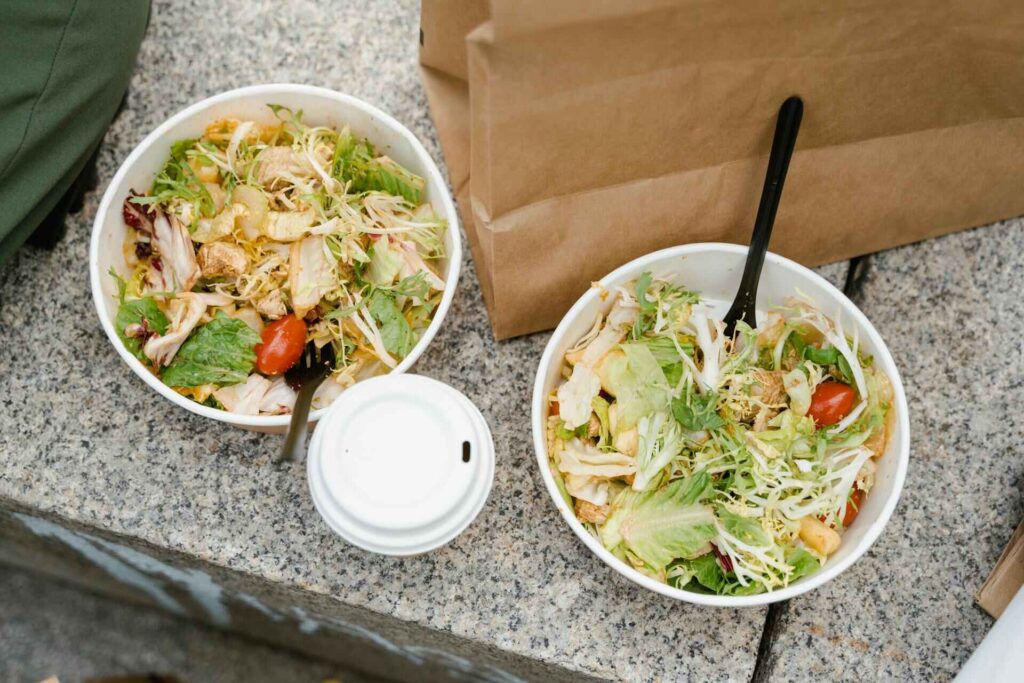
- Serves: 1 • Est. net carbs: 6–8 g • Protein: ~32 g
- Ingredients:
- 2 cups romaine, chopped
- 1 cup shredded rotisserie chicken (~150 g)
- 1 hard-boiled egg, quartered
- ¼ avocado, sliced
- 2 slices cooked bacon, chopped
- 2 tbsp crumbled blue or feta cheese
- 1 tbsp olive oil + 1 tsp lemon juice, salt & pepper
- Method:
- Toss romaine and chicken in a bowl.
- Add egg, avocado, bacon, and cheese.
- Whisk oil + lemon + salt + pepper; drizzle and toss lightly.
- Serve immediately or pack with dressing separately.
- Make-ahead tip: Store chicken and bacon separately; assemble the morning of.
- Variation: swap rotisserie chicken for canned tuna.
2. Mediterranean Tuna & Cucumber Salad in Avocado (10–15 min)
- Serves: 1 • Est. net carbs: 4–6 g • Protein: ~22 g
- Ingredients:
- 1 can tuna (5 oz / 140 g), drained
- ½ cup diced cucumber
- 2 tbsp diced red onion
- 6 kalamata olives, chopped
- 1 tbsp olive oil, 1 tbsp lemon juice, salt & pepper
- 1 ripe avocado, halved
- Method:
- Mix tuna, cucumber, onion, olives, oil, lemon, salt & pepper.
- Spoon into avocado halves.
- Serve chilled.
- Make-ahead tip: Mix tuna filling up to 24 hours ahead and store covered.
- Variation: add capers or chopped parsley.
Image alt: quick low-carb lunch ideas for work — tuna avocado salad.
3. Warm Salmon & Greens with Lemon-Dijon Dressing (20 min)
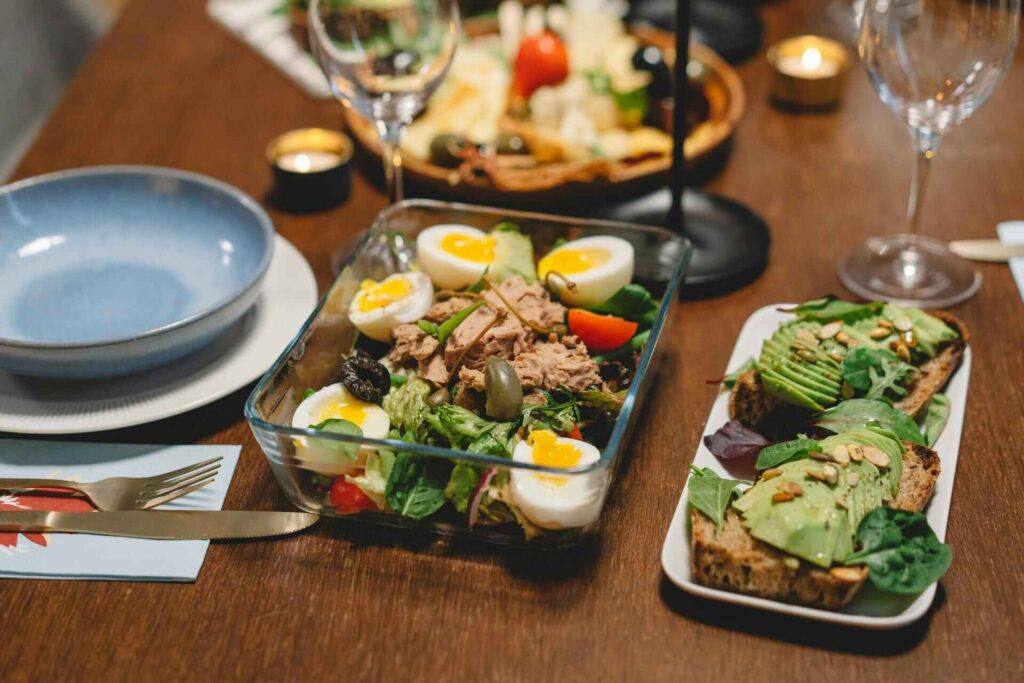
- Serves: 1 • Est. net carbs: 5–7 g • Protein: ~28 g
- Ingredients:
- 4 oz (115 g) salmon fillet
- 2 cups mixed greens
- 6 asparagus spears, blanched & halved
- 1 tbsp olive oil (for pan)
- Dressing: 1 tsp Dijon, 1 tsp lemon juice, 1 tbsp olive oil
- Method:
- Season the salmon with salt & pepper; sear skin-side down for 4–5 minutes, then flip for 2–3 minutes.
- Toss greens & asparagus with dressing.
- Flake salmon over salad and serve warm.
- Make-ahead tip: Cook extra salmon and chill for 2 days for quick salads.
- Variation: Use canned salmon for a no-cook option.
4. Greek Salad with Halloumi & Olives (no pita) (15 min)
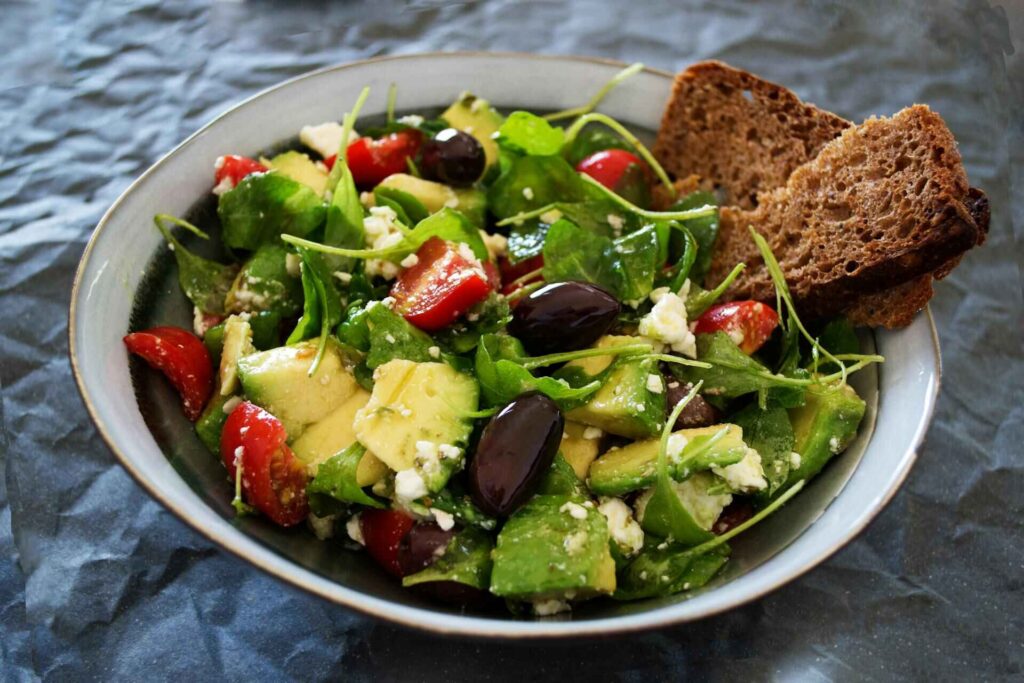
- Serves: 1 • Est. net carbs: 7–9 g • Protein: ~20 g
- Ingredients:
- 1 cup chopped cucumber, ½ cup cherry tomatoes (small amount), ¼ red onion, 8 olives
- 2 oz (55 g) halloumi, sliced & pan-seared
- 1 tbsp olive oil, oregano, salt & pepper
- Method:
- Combine veg + olives; dress with olive oil + oregano.
- Pan-sear halloumi 1–2 min each side; add on top.
- Serve warm or at room temperature.
- Make-ahead tip: keep halloumi separate until serving to maintain its texture.
- Variation: add grilled chicken for more protein.
5. Egg, Spinach & Bacon Power Salad (10–15 min)
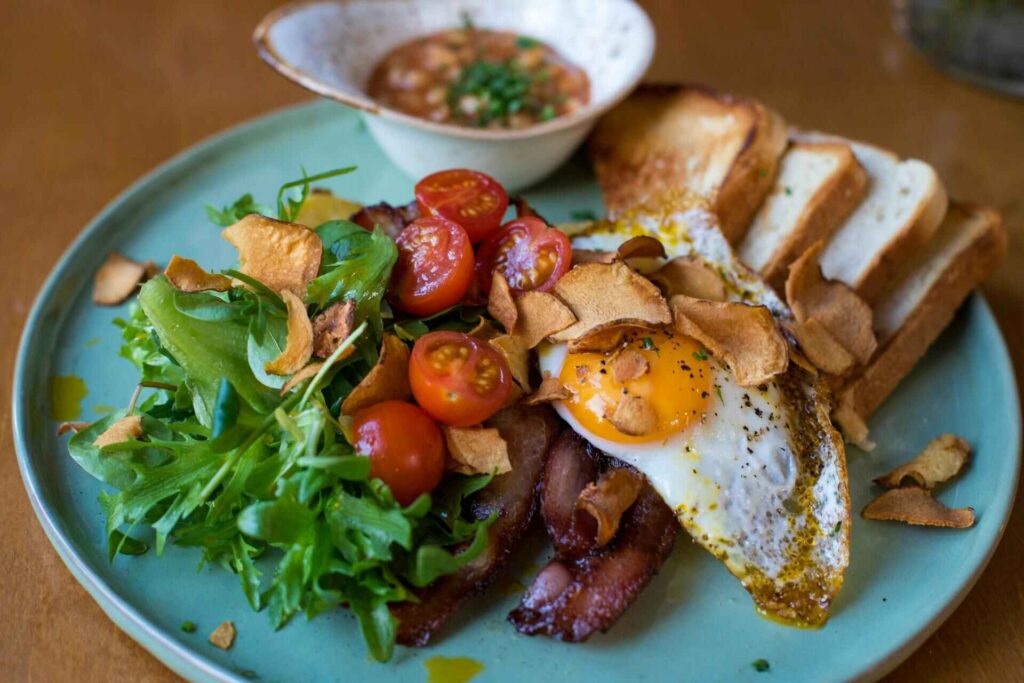
- Serves: 1 • Est. net carbs: 3–5 g • Protein: ~22 g
- Ingredients:
- 2 cups baby spinach, 2 hard-boiled eggs (sliced)
- 2 slices bacon, cooked & crumbled
- ¼ avocado, sliced, 1 tbsp mustard vinaigrette
- Method:
- Layer spinach, eggs, bacon, and avocado.
- Drizzle with vinaigrette and serve.
- Make-ahead tip: hard-boil eggs in advance (up to 7 days).
- Variation: swap bacon for smoked salmon.
Group B — Bowls & Plates (5 recipes)
6. Tex-Mex Beef & Cauliflower “Rice” Bowl (20 min)
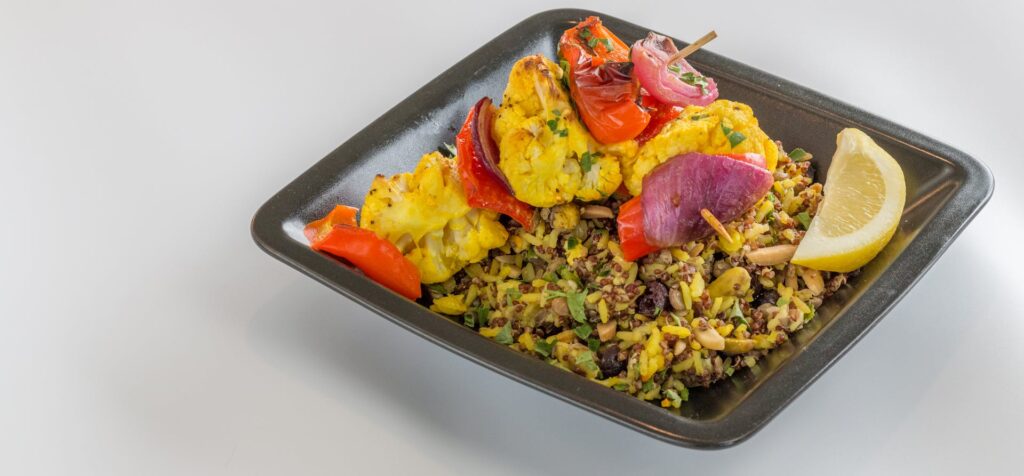
- Serves: 2 • Est. net carbs: 8–10 g per serving • Protein: ~28 g per serving
- Ingredients (per serving):
- 4 oz ground beef (90% lean), 1 cup riced cauliflower, ¼ cup shredded lettuce, 2 tbsp salsa (low sugar), ¼ avocado
- 1 tsp taco seasoning (no sugar)
- Method:
- Brown beef with taco seasoning, drain excess fat.
- Sauté riced cauliflower 3–4 min until tender.
- Assemble: cauliflower rice, beef, lettuce, salsa, avocado.
- Make-ahead tip: Cook beef in batches and freeze portions.
- Variation: Use ground turkey or shredded chicken.
7. Garlic Shrimp & Zucchini Noodles with Pesto (15–20 min)
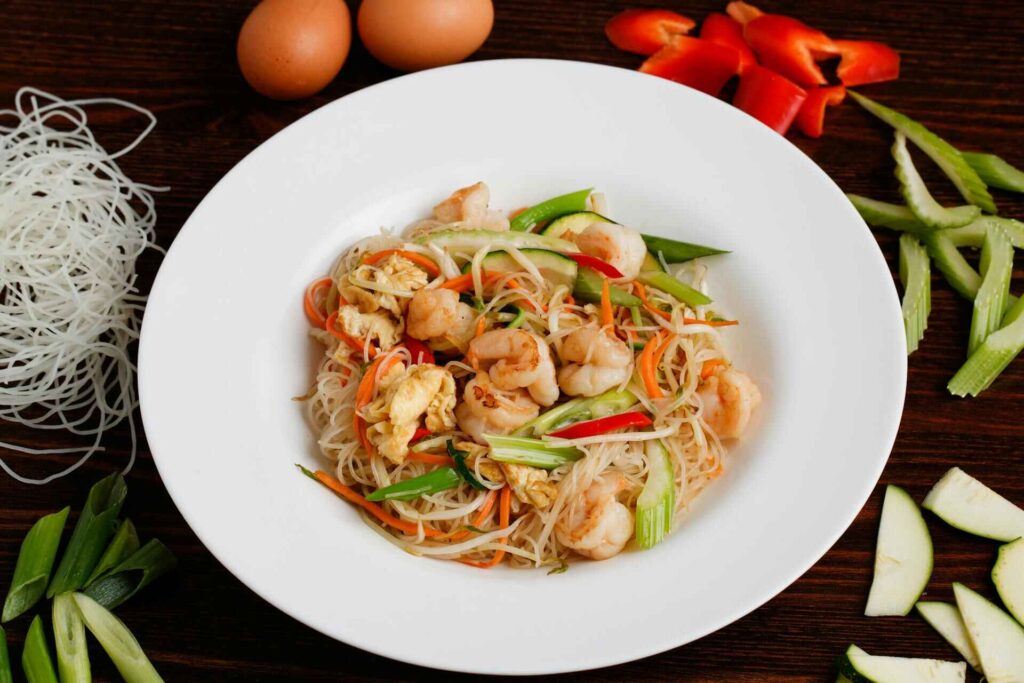
- Serves: 1 • Est. net carbs: 6–8 g • Protein: ~25 g
- Ingredients:
- 6–8 large shrimp (~120 g), 2 cups spiralized zucchini, 1 tbsp pesto, 1 garlic clove, 1 tsp olive oil
- Method:
- Sauté garlic in oil 30 sec; add shrimp and cook 1–2 min per side.
- Add zoodles, toss 1–2 min (don’t overcook).
- Stir in pesto and serve.
- Make-ahead tip: spiralize zoodles and store on a paper towel to absorb moisture.
- Variation: swap basil pesto for sun-dried tomato pesto (watch carbs).
8. Chicken Shawarma Plate with Tabbouleh-Style Cauli (25 min)
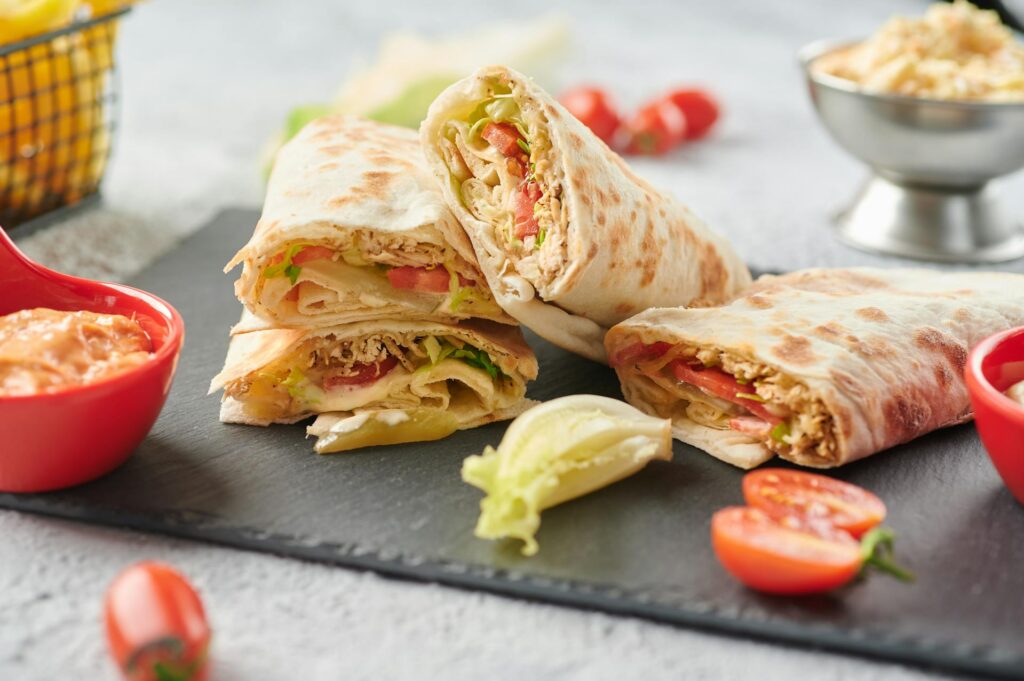
- Serves: 2 • Est. net carbs: 9–11 g per serving • Protein: ~30 g per serving
- Ingredients (per serving):
- 4 oz sliced chicken breast, 1 cup riced cauliflower, 2 tbsp chopped parsley, 2 tbsp diced tomato, 1 tbsp lemon juice, 1 tbsp olive oil, shawarma spice mix
- Method:
- Season and sear chicken until cooked.
- Toss riced cauliflower with parsley, tomato, lemon, and olive oil.
- Plate chicken over cauli “tabbouleh”.
- Make-ahead tip: marinate chicken overnight for deeper flavor.
- Variation: serve with a dollop of Greek yogurt or tahini.
9. Tofu Stir-Fry with Broccoli & Sesame (low-sugar) (20 min)
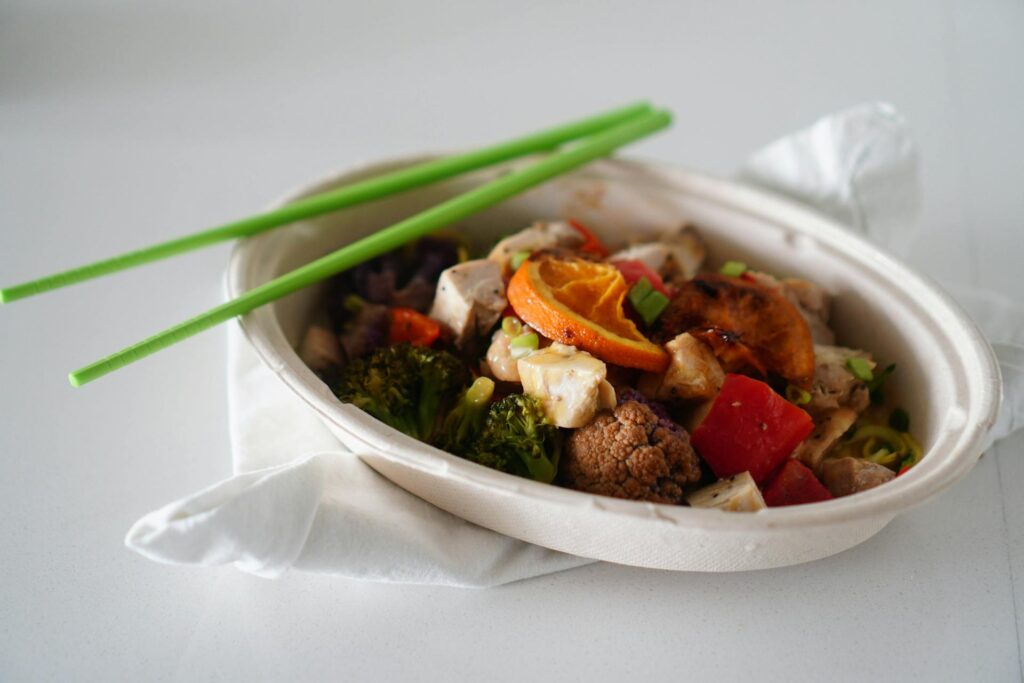
- Serves: 2 • Est. net carbs: 7–9 g per serving • Protein: ~18 g per serving
- Ingredients (per serving):
- 6 oz firm tofu, 1 cup broccoli florets, 1 tbsp tamari, 1 tsp sesame oil, garlic & ginger, scallions
- Method:
- Press & cube tofu; pan-fry until golden.
- Stir-fry broccoli with garlic/ginger; add tofu and tamari; toss.
- Garnish with scallions & sesame seeds.
- Make-ahead tip: Press tofu in advance and keep it refrigerated in water.
- Variation: add a few sliced mushrooms or bell pepper for color.
10. Turkey, Avocado & Roasted Pepper Grain-Free Bowl (15 min)
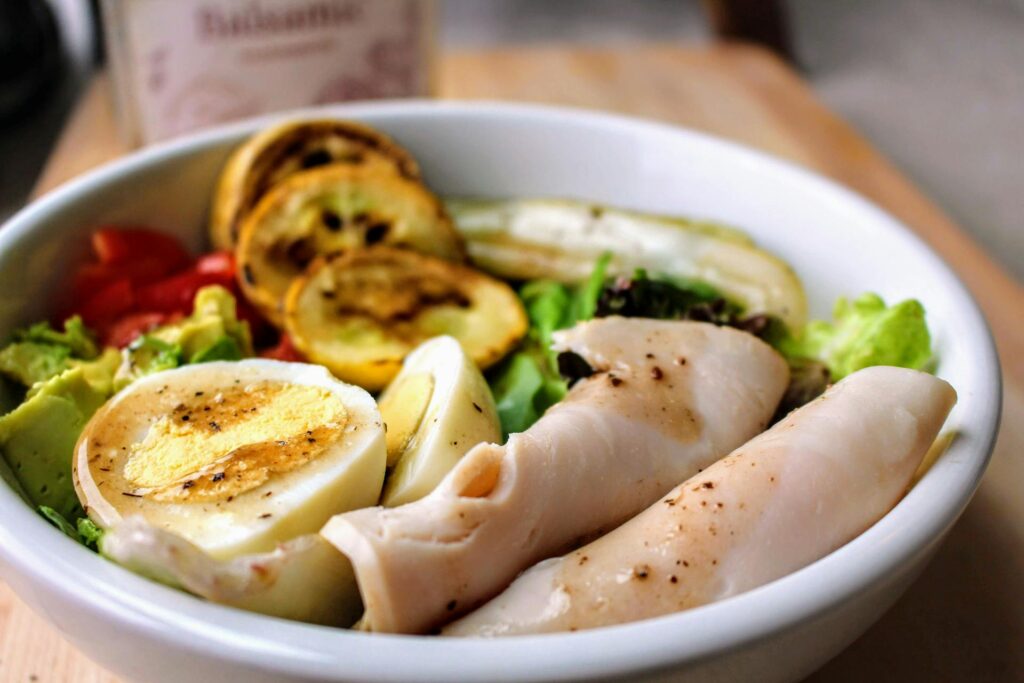
- Serves: 1 • Est. net carbs: 6–8 g • Protein: ~28 g
- Ingredients:
- 4 oz sliced deli turkey, ¼ cup jarred roasted red peppers (drained), ½ avocado, 1 cup mixed greens, 1 tbsp goat cheese, drizzle olive oil
- Method:
- Arrange greens, turkey, peppers, avocado, and goat cheese.
- Drizzle with olive oil and season.
- Make-ahead tip: pack components separately to keep greens crisp.
- Variation: substitute smoked turkey or roast beef.
Group C — Wraps, Rolls & Handhelds (4 recipes)
11. Lettuce-Wrap BLT with Avocado Mayo (10–15 min)
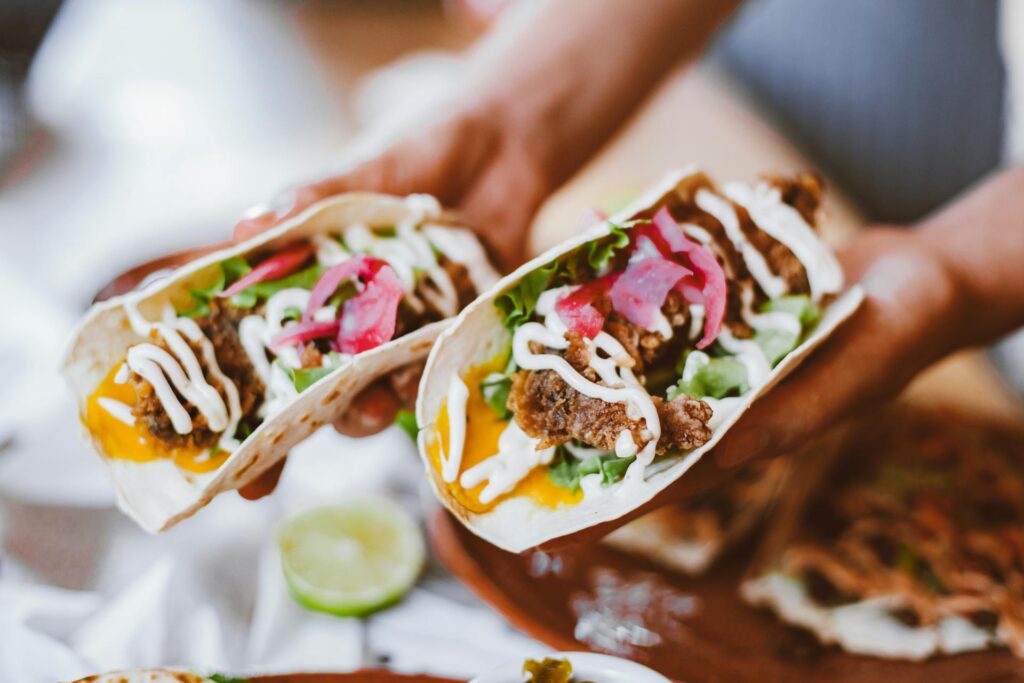
- Serves: 1 • Est. net carbs: 2–4 g • Protein: ~16 g
- Ingredients:
- 4 leaves romaine or bibb, 3 slices bacon, 2 tomato slices (small), 2 tbsp avocado mayo
- Method:
- Spread mayo on lettuce leaf; layer bacon & tomato; roll.
- Secure with a toothpick and serve.
- Make-ahead tip: crisp bacon and store separately; assemble at lunch.
- Variation: add sliced turkey for extra protein.
12. Smoked Salmon & Herbed Cream Cheese Keto Wrap (10–15 min)
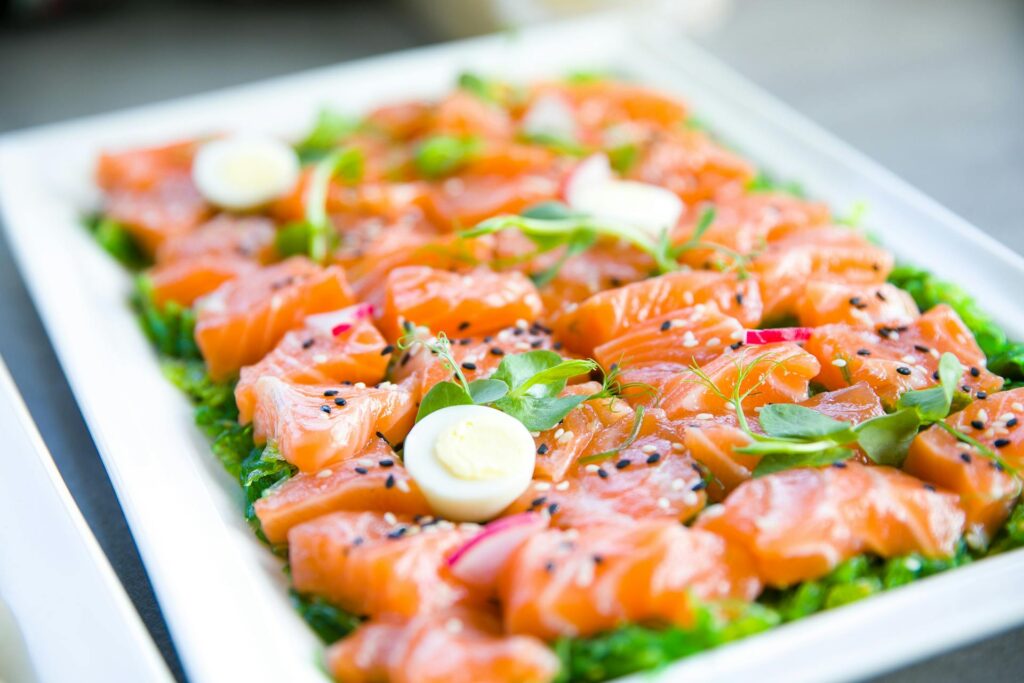
- Serves: 1 • Est. net carbs: 4–6 g • Protein: ~22 g
- Ingredients:
- 2 oz smoked salmon, 2 tbsp herbed cream cheese, cucumber ribbons, baby spinach, 1 almond-flour tortilla (or large lettuce leaf)
- Method:
- Spread cream cheese on the tortilla; layer salmon, cucumber, and spinach.
- Roll tight and slice.
- Make-ahead tip: wrap tightly in parchment to keep shape.
- Variation: Use flaxseed wrap for a different texture.
13. Keto Chicken Caesar Wrap (romaine + low-carb wrap) (15 min)
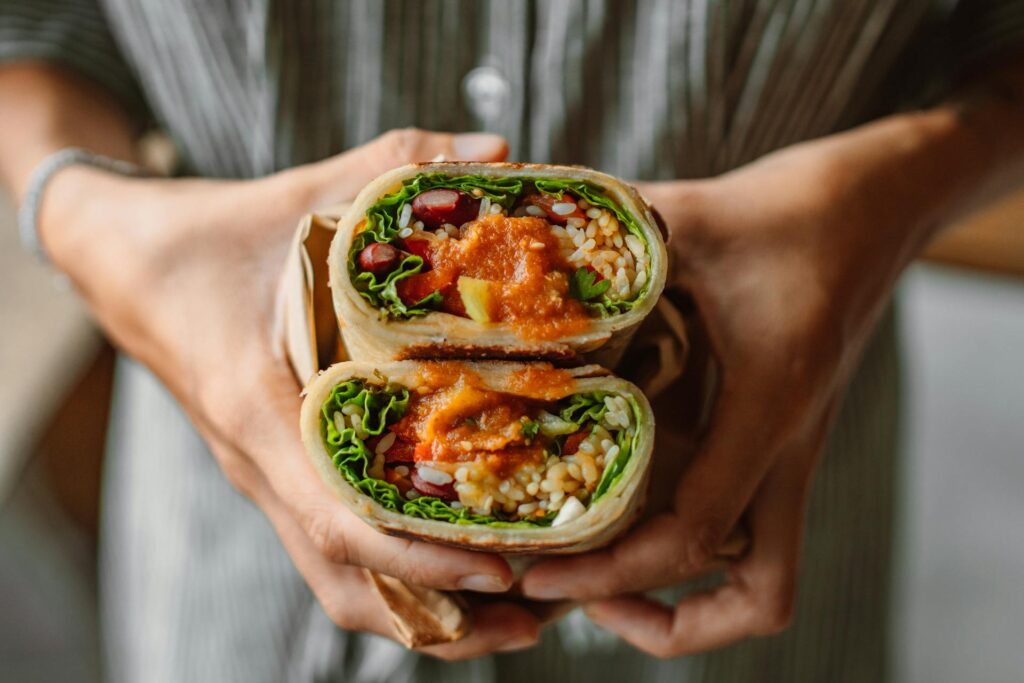
- Serves: 1 • Est. net carbs: 5–7 g • Protein: ~30 g
- Ingredients:
- 1 cup shredded chicken, 1 cup romaine, 2 tbsp grated Parmesan, 2 tbsp Caesar dressing, 1 low-carb wrap or large romaine leaf
- Method:
- Toss chicken, romaine, and Parmesan with dressing.
- Wrap in a low-carb tortilla or a large leaf.
- Make-ahead tip: store chicken pre-dressed; add lettuce at the last minute.
- Variation: add an anchovy fillet for classic flavor.
14. Asian Chicken Lettuce Cups with Crunchy Veg (15 min)
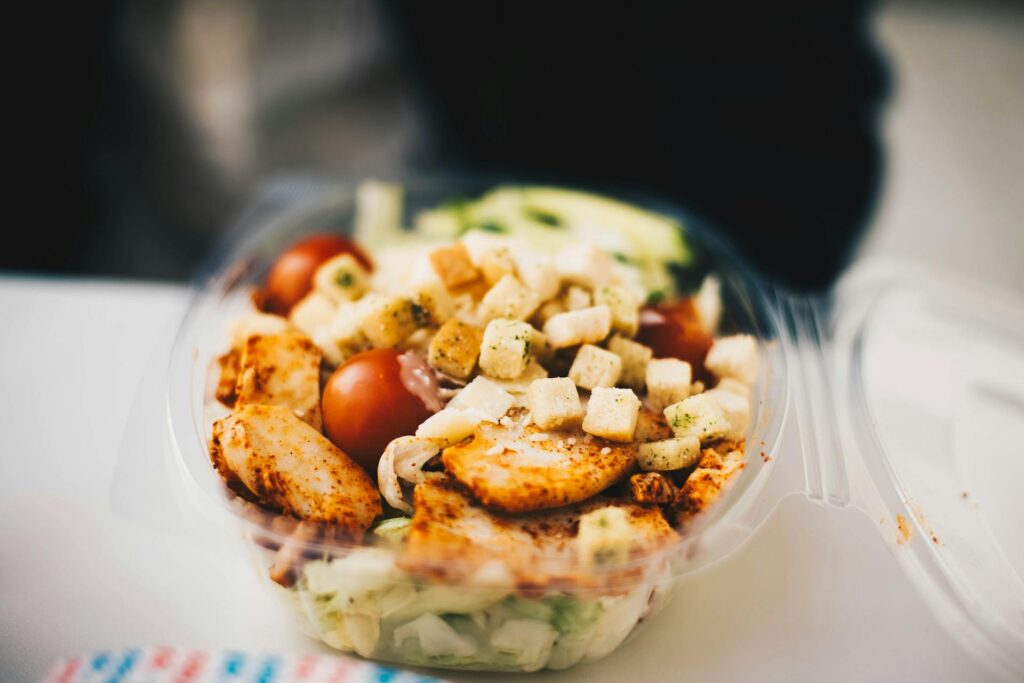
- Serves: 2 • Est. net carbs: 5–7 g per serving • Protein: ~26 g per serving
- Ingredients (per serving):
- 4 oz ground chicken, 1 tsp low-sugar hoisin or tamari mixture, shredded carrot (small amount), cucumber matchsticks, butter lettuce cups, sesame seeds
- Method:
- Brown chicken; stir in sauce and cook 1–2 min.
- Spoon into lettuce cups; top with veg & sesame.
- Make-ahead tip: Cook filling ahead and reheat in the microwave.
- Variation: Use ground turkey or tofu for a vegetarian option.
Group D — Grab-and-Go / Meal-prep Boxes (6 recipes)
15. Mason-Jar Greek Egg Salad with Olives (10 min to assemble)

- Serves: 1 • Est. net carbs: 3–5 g • Protein: ~18 g
- Ingredients:
- 3 hard-boiled eggs, chopped; ¼ cup diced cucumber; 6 chopped olives; 1 tbsp olive oil; oregano; 1 cup mixed greens (packed on top)
- Method:
- Place dressing (oil + oregano) at the jar bottom.
- Add egg mixture, then cucumber & olives.
- Top with greens and seal; shake to eat.
- Make-ahead tip: jars keep 3 days refrigerated.
- Variation: add diced red pepper for color (adjust carbs).
16. Keto Cobb Bento with Cheese Crisps & Nuts (15–20 min)
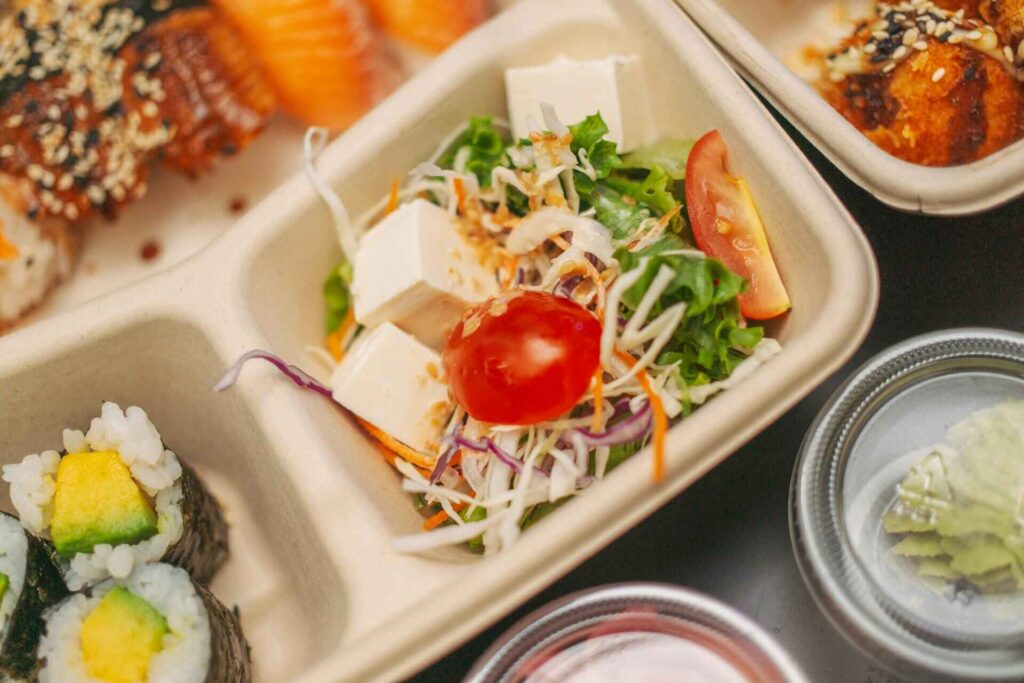
- Serves: 1 • Est. net carbs: 6–8 g • Protein: ~32 g
- Ingredients:
- 2 boiled eggs, 3 oz sliced chicken, ¼ avocado, 2 tbsp walnuts, 2 tbsp cheese crisps, a few cherry tomatoes
- Method:
- Arrange ingredients in bento compartments.
- Pack dressing separately.
- Make-ahead tip: Portion into 3 boxes at once for 3 lunches.
- Variation: substitute almonds for walnuts.
17. Asian Salmon Snack Box (cold, packed) (20 min)

- Serves: 1 • Est. net carbs: 4–6 g • Protein: ~24 g
- Ingredients:
- 3–4 oz cooked salmon, ¼ cup edamame (small), cucumber sticks, pickled ginger (small), small cabbage slaw (low sugar)
- Method:
- Cube salmon; arrange with veg components in a box.
- Add a small container of low-sugar soy or tamari if desired.
- Make-ahead tip: salmon holds 2 days chilled; edamame freezes well.
- Variation: swap salmon for smoked trout.
18. Zucchini Frittata Muffins (make ahead, reheat) (Bake 25–30 min)
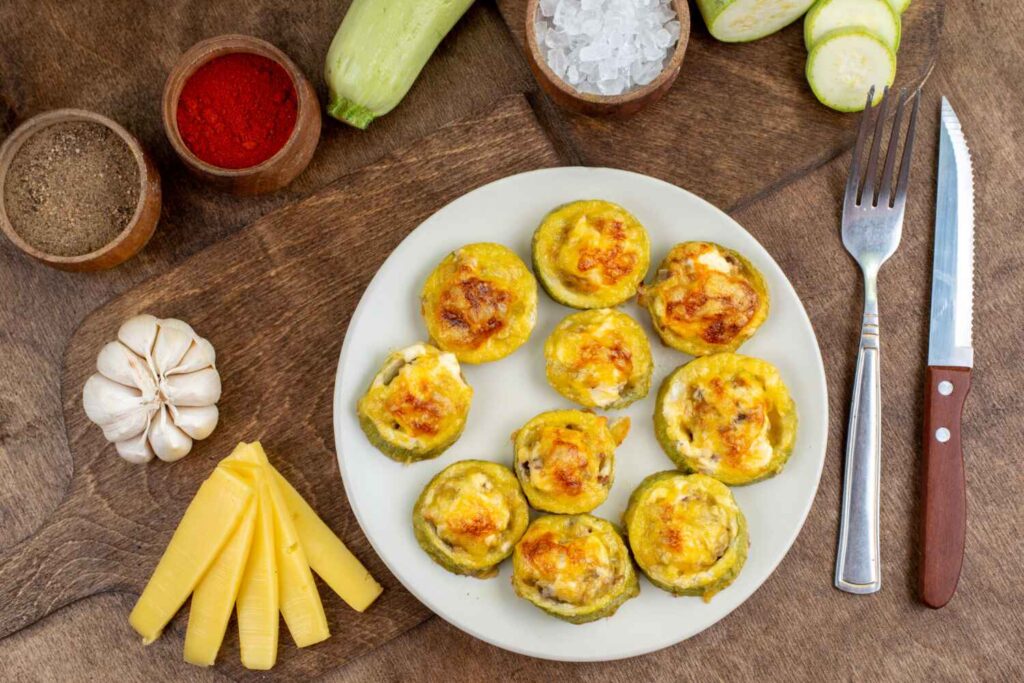
- Makes: 12 muffins • Est. net carbs: ~2–3 g each • Protein: ~6–8 g each
- Ingredients:
- 6 large eggs, 1 cup shredded zucchini (squeezed), ½ cup cheddar, 2 tbsp scallions, salt & pepper
- Method:
- Preheat 350°F (175°C). Mix eggs + zucchini + cheese + scallions.
- Pour into greased muffin tin; bake 20–25 min until set.
- Cool & store in fridge.
- Make-ahead tip: reheat 30–60 sec in microwave or eat cold.
- Variation: add chopped bacon or sun-dried tomatoes (watch carbs).
19. Spicy Turkey Meatballs with Quick Slaw (meal-prep) (25 min)
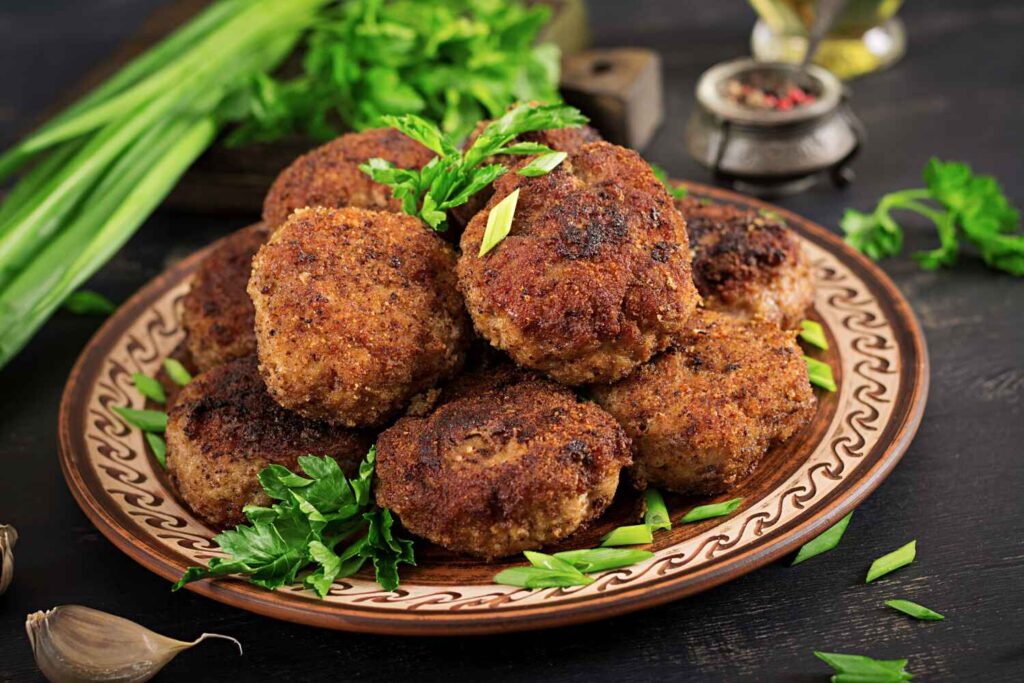
- Serves: 4 • Est. net carbs: 6–8 g per serving • Protein: ~28 g per serving
- Ingredients (per 4 servings):
- 1 lb (450 g) ground turkey, ¼ cup almond meal, 1 egg, chili flakes, 4 cups shredded cabbage, 2 tbsp apple-cider vinegar, 1 tbsp olive oil
- Method:
- Mix turkey + almond meal + egg + spices; form 16 meatballs.
- Bake 18–20 min at 400°F (205°C).
- Toss cabbage with vinegar & oil for slaw; serve with meatballs.
- Make-ahead tip: freeze meatballs in portions; thaw in fridge overnight.
- Variation: serve over riced cauliflower for a heartier bowl.
20. No-Cook Charcuterie-Style Lunch Box (5–10 min to assemble)
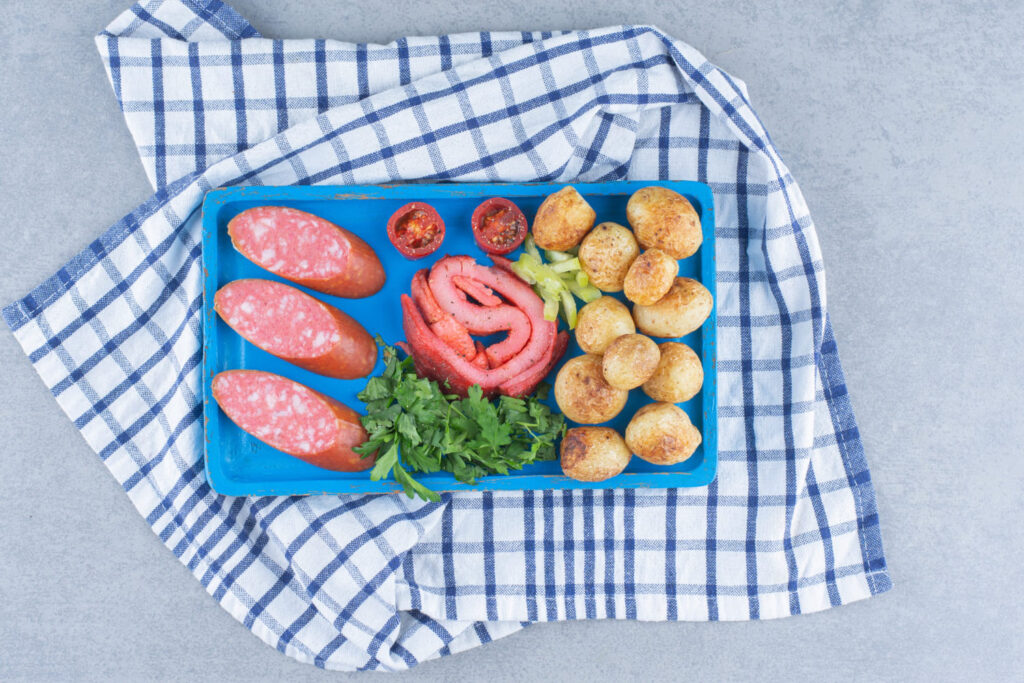
- Serves: 1 • Est. net carbs: 4–7 g • Protein: ~18–25 g
- Ingredients:
- 2 oz assorted cured meats, 2 oz hard cheese, 8 olives, handful mixed nuts, cucumber slices, pickle spear
- Method:
- Arrange items in a compartmentalized box.
- Add a small portion of mustard or low-sugar jam if desired.
- Make-ahead tip: Buy pre-sliced charcuterie for the fastest assembly.
- Variation: add a boiled egg for extra protein.
5 Make-ahead low-carb lunches for busy weeks
If you want easy low-carb lunch recipes to actually save time (instead of stealing your Sunday), these five make-ahead meals are the real deal. Each one is built to batch-cook, store well, and reheat or assemble quickly during the workweek. Below you’ll find full make-ahead instructions, storage and reheating guidance, macro estimates, time-saving hacks, freezer tips, and a printable-friendly Sunday plan you can follow in ~90 minutes.
Quick food-safety note: refrigerate perishable cooked foods within 2 hours, and use cooked leftovers within 3–4 days (or freeze). Reheat leftovers containing meat or poultry to 165°F (74°C). (30)
Make-ahead lunch #1: Zucchini Frittata Muffins (grab-and-go + freezer friendly)
Why it works: portable, protein-packed, easy to reheat or eat cold — a cornerstone of easy low-carb lunch recipes.
Yields: 12 muffins | Prep + bake: 35 minutes | Per muffin (est.): Net carbs 2–3 g • Protein 6–8 g
Ingredients
- 6 large eggs
- 1 cup shredded zucchini (squeeze out excess moisture)
- ½ cup shredded cheddar or feta
- 2 tbsp chopped scallion or chive
- Salt, pepper, and a pinch of dried oregano
- Optional: ¼ cup cooked bacon bits or chopped spinach
Batch method
- Preheat oven to 350°F (175°C). Grease a 12-cup muffin tin.
- Whisk eggs, cheese, scallion, salt & pepper in a large bowl. Fold in zucchini and optional add-ins.
- Divide into muffin cups and bake 20–25 minutes until set and slightly golden. Cool completely.
- Store in an airtight container in the fridge up to 4 days, or freeze in single portions for up to 2–3 months (quality best within 2 months). (31)
Use/serve
- Reheat 45–60 sec in the microwave or eat cold with a side salad.
- For a portable combo, pack 2 muffins + a small container of olives + baby spinach.
Variation: add sun-dried tomatoes (watch carbs) or substitute goat cheese for cheddar.
Make-ahead lunch #2: Spicy Turkey Meatballs + Quick Cabbage Slaw (make extra; freezes well)
Why it works: freeze & reheat, high in protein, pairs with low-carb sides like cauliflower rice.
Yields: 4 servings (about 16 meatballs) | Prep + bake: 30–35 minutes | Per serving (est.): Net carbs 6–8 g • Protein 25–30 g
Ingredients
- 1 lb (450 g) ground turkey
- ¼ cup almond meal (binder)
- 1 egg, salt, pepper, ½ tsp chili flakes
- 4 cups shredded cabbage (for slaw)
- 2 tbsp apple-cider vinegar + 1 tbsp olive oil for slaw
Batch method
- Combine turkey, almond meal, egg, and seasoning; form into 1-inch meatballs.
- Bake at 400°F (205°C) for 18–20 minutes until internal temp is 165°F. Let cool.
- Toss shredded cabbage with vinegar and olive oil for a crunchy slaw.
- Portion 3–4 meatballs + 1 cup slaw per container.
Storage & freezing
- Fridge: 3–4 days.
- Freeze meatballs in portioned zip bags (freeze flat) up to 2–3 months; thaw in fridge overnight. Reheat to 165°F before eating. (32)
Time-saving tip: Bake two sheet pans at once (double the batch), then portion into 4–6 containers and freeze the extras.
Make-ahead lunch #3: Mason-Jar Greek Egg Salad (Dressing on bottom)
Why it works: no reheating necessary, salad stays crisp, very quick assembly, and travel-friendly.
Yields: 4 jars | Prep: 20 minutes | Per jar (est.): Net carbs 3–5 g • Protein 18–20 g
Ingredients
- 8 hard-boiled eggs, chopped
- 1 cucumber, diced
- ¼ cup chopped olives
- 4 tbsp olive oil + lemon (dressing)
- 4 cups mixed greens (packed on top)
Batch method
- Make hard-boiled eggs (or buy pre-boiled). Chop and mix with cucumber and olives.
- Put dressing (oil + lemon + salt) in the jar bottom, add egg mixture, then top with greens. Seal.
- Refrigerate upright. Keep jars up to 3–4 days.
How to eat
- Shake jar vigorously to distribute dressing, pour into bowl, or eat straight from jar. No reheating required.
Variation: swap olives for capers or add dill & a spoon of tzatziki for Mediterranean flavor.
Make-ahead lunch #4: Asian Salmon Snack Box (cold)
Why it works: no-cook or leftover salmon option, balanced macros, great cold option for offices.
Yields: 4 boxes | Prep: 25 minutes (if cooking salmon fresh) | Per box (est.): Net carbs 4–6 g • Protein 22–26 g
Ingredients
- 1 lb cooked salmon, flaked (baked or leftover)
- 1 cup edamame (shelled; small portion)
- Cucumber sticks, pickled ginger (small), slaw with rice vinegar
Batch method
- Bake or pan-cook salmon (season simply with salt & pepper) and cool. Flake into pieces.
- Blanch or thaw edamame if frozen. Prepare slaw and cucumber sticks.
- Portion salmon + edamame + veg into 4 containers. Keep sauces separate.
Storage
- Refrigerate up to 3–4 days. For longer storage, freeze salmon portions (but edamame & fresh veg are best fresh). Reheat salmon to 165°F if you prefer it warm, or eat it cold.
Make it faster: use canned salmon in a pinch and drain well; it’s a nearly instant protein.
Make-ahead lunch #5: No-Cook Charcuterie Lunch Box (assemble on Sunday)
Why it works: zero reheating, very low prep once components are purchased, flexible choices for different macros.
Yields: 4 boxes | Prep: 20–30 minutes to assemble | Per box (est.): Net carbs 4–7 g • Protein 18–30 g (varies by meat/cheese)
Ingredients (per box template)
- 2–3 oz cured meats (nitrite-free option if preferred)
- 2 oz hard cheese (cheddar, manchego)
- 6–8 olives + pickle spear
- ¼ cup mixed nuts (almonds, walnuts)
- 1 cup sliced cucumber & radish
Batch method
- Buy pre-sliced meats & cheeses to save time. Portion into 4 containers with compartments.
- Add nuts & pickles, then fresh veg. Store lids on.
Storage
- Consume within 3–4 days. No reheating required. Nuts will stay crunchy if stored in a cool place.
Variation: add a hard-boiled egg or a small portion of low-sugar jam for variety.
Weekly batch-cook schedule (90–minute Sunday plan)
Use this schedule to make all five lunches quickly. The plan assumes basic multitasking (oven + stove + slicing). Times are approximate.
0:00–0:10 — Prep
- Preheat oven to 400°F (205°C). Line 2 sheet pans.
- Wash & chop veggies; spiralize zucchini; shred cabbage.
0:10–0:40 — Bake & cook
- Put frittata muffins in oven (20–25 min).
- While muffins bake, form turkey meatballs and put them on the second sheet pan; bake 18–20 min (can go in once muffins are out).
- Bake salmon fillet (15–18 min) on a small tray.
0:40–1:00 — Cool & assemble
- Let baked items cool slightly. Flake salmon and divide into boxes. Portion meatballs into containers with slaw. Cool muffins on the rack.
1:00–1:20 — Jar & pack
- Assemble mason-jar egg salads (dressing bottom, egg mix, greens top).
- Put together charcuterie boxes (no cooking). Portion nuts & pickles.
1:20–1:30 — Label & stash
- Label each container with date and contents (use masking tape + marker). Refrigerate or freeze planned freezer items (extra meatballs or muffins).
Why labeling matters: it helps you follow the 3–4 day rule and avoid mystery food in the office fridge.
Storage, reheating & safety cheat sheet
- Refrigerator window: Use cooked make-ahead lunches within 3–4 days.
- Freezing: Freeze cooked meatballs, cooked salmon portions, and frittata muffins for 2–3 months for best quality. Thaw overnight in the fridge.
- Reheating: reheat meat & mixed dishes to 165°F internal temperature. Microwave covered, stir once, and check the temp. Sauces and gravies should be brought to a rolling boil.
- Cool fast: put hot foods in shallow containers to cool quickly before refrigerating (prevents time in the 40–140°F “danger zone”). (33)
Macro targets & portion guidance for these make-ahead lunches
When building make-ahead meals, aim for these simple macro rules — they’ll keep your easy low-carb lunch recipes balanced and satisfying:
- Protein: 20–35 g per lunch (helps satiety & muscle maintenance).
- Net carbs: ~5–12 g for stricter low-carb days; 10–30 g if you’re more moderate.
- Fats: moderate — avocado, olive oil, cheese, or nuts add satiety.
Example: 3 turkey meatballs (~25 g protein) + 1 cup slaw (~4 g net carbs) + 1 tbsp olive oil fits well within a low-carb lunch target.
(For general low-carb guidance and why protein + veg first is sensible, see Mayo Clinic & Harvard Nutrition Source.) (34)
Time-saving hacks & pantry shortcuts
- Use rotisserie chicken instead of cooking breasts for bowls and salads.
- Buy pre-washed bagged greens, frozen riced cauliflower, and pre-spiralized zucchini to shave prep time.
- Canned salmon/tuna are excellent emergency protein options for the salmon snack box or salads.
- Freeze in portioned flat bags for quicker thawing and stacking.
- Label with “eat by” dates the moment you pack, so nothing lingers beyond 4 days.
One-week sample plan (compact)
Sunday: batch-cook everything using the 90-minute plan.
Mon: 2 zucchini muffins + charcuterie side.
Tue: Turkey meatballs + slaw (reheat).
Wed: Mason-jar egg salad (shake & eat).
Thu: Salmon snack box (cold).
Fri: Rotisserie chicken Cobb bowl (assemble from prepped chicken + greens).
Rotate and repeat — freeze extras so you always have backup, easy low-carb lunch recipes.
Final tips (keep momentum)
- Start with 2–3 favorite make-ahead recipes and rotate them — that reduces decision fatigue.
- Keep a small “emergency” stash in the freezer (meatballs, muffins) for super-busy weeks.
- Use the labeling trick (date + recipe) to follow safe storage windows and prevent food waste.
How to meal prep easy low-carb lunch recipes for a week — step-by-step
Meal-prepping easy low-carb lunch recipes for a full week doesn’t need to be overwhelming. With a little planning, you can spend 60–120 minutes on a single cook day and lock in 5–7 lunches that are tasty, balanced, and office-ready. Below is a practical, step-by-step system (with templates, a Sunday timeline, shopping guidance, batch-cook matrix, storage rules, reheating notes, and a sample week) so you can do it confidently and repeatably.
Step 1: Decide your goal & constraints (10 minutes)
Before shopping or cooking, get clear on three things:
- Calories & macros target (rough guide: 20–35 g protein per lunch; 10–30 g net carbs for most low-carb approaches).
- Time you want to spend on prep (60, 90, or 120 minutes).
- Equipment & storage available (oven, microwave at work, number of containers).
This will determine whether you batch-cook lots of proteins or assemble more no-cook boxes.
Step 2: Pick 3–5 easy low-carb lunch recipes (10–15 minutes)
Choose a small rotation to reduce decision fatigue. Mix formats:
- 1 warm bowl (e.g., Tex-Mex cauliflower bowl)
- 1 salad (e.g., Cobb-style chicken salad)
- 1 grab-and-go (zucchini muffins or mason-jar egg salad)
- 1 no-cook box (charcuterie or tuna-avocado)
- 1 flexible “leftovers” day
Tip: select at least one recipe that uses the same protein as another (e.g., roast chicken for both a bowl and a salad) so you maximize efficiency.
Step 3: Build a batch-cook matrix (5 minutes)
Create a 2×3 matrix of Proteins × Veg / Sides × Fats/Flavor you will prepare. Example:
- Proteins: roast chicken breasts (2), turkey meatballs (batch), baked salmon (1 fillet)
- Veg / Sides: frozen riced cauliflower, roasted broccoli, mixed greens (bag)
- Fats / Flavor: avocado halves, pesto, tahini dressing, olives, nuts
This matrix lets you mix & match components into multiple lunches.
Step 4: Smart shopping list (15–20 minutes)
Buy for the number of lunches you want. Example one-person, 5 lunches:
- Proteins: 1 rotisserie chicken or 3 chicken breasts; 1 lb ground turkey; 1 salmon fillet (or 2 cans salmon)
- Eggs: 6–8 large
- Veg: 1 bag mixed greens, 1 bag frozen riced cauliflower, 3 zucchinis, 1 head broccoli, 2 cucumbers, 1 cabbage (for slaw), cherry tomatoes
- Fats & extras: 3 avocados, olive oil, nuts (almonds), feta/cheddar, 1 jar roasted peppers, olives, almond-flour tortillas (optional)
- Condiments: mustard, mayo, soy/tamari, vinegar, pesto
Buy frozen riced cauliflower and pre-washed greens to save time.
Step 5: Sunday batch-cook timeline (90 minutes — exact)
Use multitasking: oven + stove + prep.
0:00–0:10 — Prep & oven preheat
- Preheat oven to 400°F (200°C); line 2 sheet pans. Chop veg and portion spices.
0:10–0:30 — Bake proteins
- Roast chicken breasts (or heat rotisserie). Bake turkey meatballs (single tray).
- Put a salmon fillet on a small tray or roast simultaneously if space.
0:30–0:45 — Veg & sides
- Roast broccoli/cauliflower on second tray (olive oil, salt, pepper).
- Sauté a pan of riced cauliflower if you prefer stovetop.
0:45–1:00 — Bake & cool
- Remove items; let cool on racks. Make zoodle/pesto or mix a quick slaw (cabbage + vinegar + oil).
1:00–1:20 — Assemble & portion
- Portion proteins and sides into containers: 3–4 containers as warm bowls, 2 mason jars (dressing bottom), 1 charcuterie box. Add avocado or nuts only on the day of eating when possible, or add small airtight cups to preserve texture.
1:20–1:30 — Label, chill, freeze
- Label with date and “eat by” (3–4 days). Freeze any extras (meatballs or muffins) for later.
Step 6: Assembly templates (2 minutes each day)
Use simple templates to assemble each day in under 5 minutes:
Template A — Bowl (reheat)
- 4–5 oz protein + 1 cup riced cauliflower or roasted veg + 1 cup greens + 1 tbsp fat (olive oil/pesto)
Template B — Salad (cold)
- 4–5 oz protein + 2 cups greens + ½ cup crunchy veg + 1 tbsp nuts + dressing separate
Template C — Grab & go
- 2 frittata muffins + 1 small charcuterie side (cheese + nuts)
Storage & food-safety rules (must follow)
- Cool hot foods in shallow containers within 2 hours.
- Refrigerate make-ahead lunches, consume within 3–4 days, or freeze extras.
- Reheat to 165°F / 74°C for meat dishes. Use microwave-safe glass for office reheating.
Midweek refresh & variety hacks
- Day 3 refresh: switch dressing, add fresh herbs, or squeeze lemon to brighten flavors.
- Crunch hack: Pack nuts or cheese crisps separately and add before eating.
- Swap day: if you’re tired of a meal, re-imagine leftovers: turkey meatballs → meatball salad with greens and vinaigrette.
Vegetarian / Vegan adaptations
- Swap animal proteins for tofu, tempeh, canned chickpeas (small portion), or higher-quantity nuts & seeds.
- Use olive oil, tahini, and avocado for satisfying fats. Press & marinate tofu before baking for the best texture.
Sample 5-day prep menu (example using recipes from the full list)
- Mon: Cobb-style chicken salad (prepped chicken + greens)
- Tue: Tex-Mex beef & cauliflower bowl (reheat)
- Wed: Mason-jar egg salad + greens (shake & eat)
- Thu: Garlic shrimp & zoodles (reheat shrimp, toss with fresh zoodles & pesto)
- Fri: No-cook charcuterie box + 1 frittata muffin
Final tips to stay consistent
- Start small: prep 3 lunches first week, then scale.
- Keep a one-item backup (cans of tuna or pre-cooked rotisserie chicken).
- Rotate dressings and spices to make repeats feel different (lemon-Dijon one day, tahini-lime the next).
Meal-prepping easy low-carb lunch recipes becomes effortless once you adopt a repeatable system: plan, batch-cook, portion, and assemble with simple templates. Want me to convert this into a printable 1-page meal-prep planner with exact shopping quantities for 1, 2, or 4 people?
Low-carb office lunch recipes: packing, reheating & etiquette
Making easy low-carb lunch recipes truly work at the office is part logistics, part manners, and part food safety. Below is a practical guide with step-by-step packing, reheating, storage, and etiquette tips so your meals arrive fresh, heat safely, and don’t annoy your coworkers.
Quick summary (what this section covers)
- Best containers & gear for easy low-carb lunch recipes
- Packing order so salads don’t go soggy, and crunch stays crunchy
- Safe cooling, refrigeration & storage timelines (what to keep, toss, or freeze)
- Reheating methods and USDA temperature guidance.
- Office etiquette: odor control, labeling, fridge rules, and allergy considerations
- Troubleshooting (no fridge, no microwave) + sample office lunch combos
All core food-safety recommendations below follow U.S. food safety authorities (USDA, CDC, FDA / FoodSafety.gov, and FSIS). (35, 36, 37)
Containers & gear — buy once, use forever
Pick a small kit that covers most easy low-carb lunch recipes:
- Glass, snap-lock containers (microwave- and dishwasher-safe) for reheating bowls and casseroles.
- Leakproof dressing jars (2–4 oz) to keep vinaigrettes separate from salads.
- Small silicone snack cups / reusable bags for nuts, cheese crisps, or crunchy toppings.
- Insulated lunch bag + ice pack if fridge access is unreliable.
- Stainless steel bento box for no-heat charcuterie boxes (durable, non-reactive).
- Reusable cutlery & napkin — handy and eco-friendly.
Why glass? It won’t stain or hold odors, and it’s the safest for reheating protein-rich low-carb bowls. (If you must use plastic, choose microwave-safe, BPA-free containers.)
Packing order — avoid soggy salads and limp zoodles
Layer and separate components so textures hold:
- Bottom / heaviest layer: dressing, pickles, or wet ingredients.
- Middle: cooked proteins (chicken, meatballs, salmon) and sturdy veg (roasted cauliflower).
- Top/last: delicate greens, avocados, crunchy toppings (keeps them from going soft).
- Crunchy items & dressings: pack separately in small cups — add right before eating.
For mason-jar salads or layered bowls, put dressing at the bottom, layered solids next, and greens at the top — shake or tip into a bowl to eat.
Cooling & refrigeration — speed matters
- Cool hot food quickly: divide large batches into shallow containers to speed chilling and avoid the “danger zone” (40–140°F / 4–60°C). Refrigerate within 2 hours (1 hour if ambient >90°F).
- Fridge temp: keep refrigerator at 40°F (4°C) or below; use an appliance thermometer if needed.
- Storage timelines: eat refrigerated leftovers within 3–4 days (USDA / FoodSafety.gov guidance). Freeze any portions you won’t consume within that window.
Practical tip: Label containers with date cooked and eat by — reduces guesswork and prevents awkward office science experiments in the fridge.
Reheating — methods & target temperatures
Safe reheating target: heat leftovers until they reach 165°F (74°C) throughout (use a food thermometer). This kills harmful bacteria that may have grown since cooking.
Common reheating methods
- Microwave: fastest. Cover loosely (vent), stir or rotate halfway, and test with a thermometer in the thickest part.
- Stovetop: ideal for preserving texture (sauté meatballs, re-sear salmon).
- Oven/Toaster-oven: good for re-crisping (cheese crisps, baked bowls) — set no lower than 325°F for even reheating. (38)
Rule of thumb: reheat only the portion you’ll eat right away; don’t repeatedly reheat and re-store the same portion — quality and safety both decline.
Office etiquette — don’t be the fridge offender
Follow these unspoken rules so your easy low-carb lunch recipes are welcome at work:
- Seal pungent foods (fish, kimchi, blue cheese) in double bags or airtight containers.
- Label clearly with your name and a date. It helps co-workers and facilities staff keep the fridge tidy.
- Take leftovers home at the end of the day — don’t let meals linger for days. (Fridge shelves are not personal storage lockers.) (39)
- Mind shared appliances: clean up spills in microwaves; place reheated trays on a plate to catch drips.
- Be conscious of smells: if your meal is very fragrant, consider eating at your desk or outside (or pick a cooler, less fragrant option that day).
Allergy & cross-contamination considerations
- Keep allergy-sensitive foods (nuts, shellfish) in clearly labeled containers. If you prepare a meal with a lot of nuts, consider packing it separately from shared spaces like the office fridge shelf.
- Use clean utensils and surfaces when preparing at home. In the office, use disposable or designated utensils when appropriate to avoid cross-contact.
No-fridge or no-microwave hacks (for limited office kitchens)
- Insulated bag + ice pack keeps cold-chain items safe for 4–6 hours; add an extra ice pack if the day is long.
- No microwave? Choose no-cook easy low-carb lunch recipes — charcuterie boxes, tuna-in-avocado, mason-jar salads, cold shrimp zoodles.
- No fridge access at all? Rotate to shelf-stable proteins (canned tuna, vacuum-packed smoked salmon) and sturdy veg (cucumber, cherry tomatoes) — consume within the same day.
Sample office-friendly easy low-carb lunch recipes + reheating notes
- Cobb chicken bowl (glass container) — reheat chicken if you prefer hot (microwave 60–90 sec), add fresh avocado at the end.
- Zucchini frittata muffins — reheat 30–45 sec in microwave or eat cold — great grab-and-go.
- Asian salmon snack box (cold) — no reheating required; keep on ice pack until lunch.
- Tex-Mex cauliflower bowl — reheat cauliflower & meat to 165°F, then add fresh toppings.
- No-cook charcuterie box — no reheating; keep chilled.
Cleaning & communal courtesy
- Wipe up spills immediately; if you stain a communal plate or microwave, clean it or notify facilities.
- Take home disposable packaging and dispose of it responsibly — recycling where possible.
- If you borrow someone’s microwave dish or utensil, return it clean.
Quick troubleshooting
- Food smells funky? Don’t taste — discard if past 3–4 days or if odor/texture is off.
- Forgot to bring an ice pack? Store your lunch in the coldest part of the fridge (not the door) and eat sooner rather than later.
- Microwave cold spots? Stir and test with a thermometer in the thickest part; continue heating until 165°F.
Portable office lunch checklist
- Glass containers (1 small, 1 medium, 1 large)
- 2 small dressing jars or silicone cups
- Insulated bag + ice pack
- Reusable cutlery & napkin
- Food thermometer (small digital) — optional but handy
- Labels + marker (name + date)
- Hand wipes for desk cleanup
Low-carb lunches for weight loss — portions, macros & swapping tips
Here’s a focused, actionable guide to turning easy low-carb lunch recipes into real weight-loss wins — without starving, over-counting, or living on salad despair. I’ll cover portion visuals, macro targets, smart swaps to cut starchy carbs, sample plate templates, tracking tips, and quick meal examples you can use today.
Quick note: the most reliable way to lose weight is a sustained calorie deficit (for example, ~500–750 kcal/day for ~1–1.5 lb per week). Low-carb lunches can help by increasing satiety and reducing cravings, but long-term success depends on consistency and overall diet quality.
Portion targets that actually work (visual, simple)
Use these easy visuals instead of exact scales when you’re busy. Aim for a balanced plate that prioritizes protein and non-starchy veg.
- Protein (palm or 3–4 oz cooked / ~20–35 g protein) — about the size/thickness of your palm or a deck of cards. This supports fullness and muscle maintenance. (40)
- Non-starchy veg (1–2 cups cooked or 2 cups raw leafy greens) — fills volume so you feel satisfied without many carbs. MyPlate and public health guidance emphasize generous veg portions. (41)
- Healthy fat (1 tbsp olive oil, 1/4 avocado, or a small handful of nuts) — adds satiety and flavor; you don’t need large amounts.
- Controlled carbs (10–30 g net carbs per lunch for most people aiming to be “low-carb”) — this allows small portions of fruit, a starchy side replacement, or a modest whole-grain if you’re less strict. (Net carbs ≈ total carbs − fiber.)
Use the plate rule: protein = palm; veg = half your plate; fats = small portion; carbs (if any) = quarter plate or less.
Macro templates for weight-loss lunches
Pick a template and plug in foods from your easy low-carb lunch recipes rotation.
- Higher-protein, lower-carb (strict low-carb)
- Protein: 4–5 oz (30–35 g)
- Veg: 2 cups leafy greens + 1 cup cruciferous veg
- Fat: 1/4 avocado or 1 tbsp olive oil
- Est. net carbs: 8–15 g
- Moderate low-carb (flexible)
- Protein: 3–4 oz (20–28 g)
- Veg: 1–2 cups mixed vegetables
- Starchy swap: 1/2 cup riced cauliflower or 1/3 cup sweet potato (if desired)
- Fat: 1 tbsp nuts or 1 oz cheese
- Est. net carbs: 15–30 g
- Vegetarian low-carb
- Protein: 1 cup Greek yogurt or 4–6 oz tofu (20–25 g)
- Veg: big salad + roasted cauliflower
- Fat: 1–2 tbsp tahini or 2 tbsp seeds
- Est. net carbs: 12–25 g
These targets are flexible — easy low-carb lunch recipes should be adjusted to fit your daily calorie goal and activity level.
Smart swaps: lower carbs, keep satisfaction
Swap common higher-carb items for lower-carb alternatives that preserve texture and flavor.
- Rice/grains → riced cauliflower (same “base” feel, far fewer net carbs).
- Pasta → zucchini noodles (zoodles) or shirataki noodles (light, quick, absorb sauces).
- Bread/sandwich → large lettuce wraps or almond-flour tortilla (cuts out bread carbs instantly).
- Potatoes → extra roasted non-starchy veg (broccoli, turnips, radishes roasted deliver satisfaction). (42)
- Sugary dressings → olive oil + mustard + lemon or yogurt-based dressings (less hidden sugar).
- Large fruit portions → small berries (lower sugar, high fiber).
Swap examples in practice: a chicken burrito bowl becomes chicken + cauliflower rice + salsa + avocado (cuts ~30–50 g carbs depending on rice portion removed).
Portion swaps for common menu items (practical cheats)
- Sandwich (2 slices of bread) → Lettuce wrap + extra filling (saves ~30–50 g carbs).
- 1 cup cooked rice (~45 g carbs) → 1 cup riced cauliflower (~5–6 g carbs).
- 1 medium potato (~30 g carbs) → 1 cup roasted broccoli + 1 tbsp olive oil (~6–8 g carbs).
- Pasta serving (1 cup cooked ~40 g carbs) → 1 cup zoodles + 2–3 oz protein (~6–8 g carbs).
These swaps are the fastest way to cut carbs without losing the “meal” feeling.
Example easy low-carb lunch recipes for weight loss (plate templates)
- Cobb bowl (strict): 4 oz chicken + 2 cups greens + ½ avocado + 1 boiled egg + 1 tbsp olive oil (net carbs ~6–8 g).
- Tex-Mex bowl (moderate): 4 oz lean beef + ¾ cup cauliflower rice + pico de gallo + 1/4 avocado (net carbs ~12–15 g).
- Zoodle pesto with shrimp (light): 3–4 oz shrimp + 2 cups zoodles + 1 tbsp pesto + sprinkle parmesan (net carbs ~6–10 g).
These follow the macro templates above and are easy to scale for your energy needs.
Tracking, tweaks & real-world tips
- Track for 1–2 weeks using a simple app or notebook to learn your typical lunch calories & carbs. Small, consistent deficits add up.
- Prioritize protein first — if your lunch is protein-rich, you naturally reduce snacking and overall intake. Aim for that 20–35 g protein window.
- Use fiber to blunt blood-sugar response — non-starchy veg and small berries increase volume without many digestible carbs.
- Rotate flavors & textures (crunchy nuts, pickles, fresh herbs) so repeats don’t feel boring — this improves adherence.
- Weigh or eyeball early on: use a food scale for a week, then eyeball portions using the palm/fist method thereafter. MyPlate portion visuals are a helpful reference.
Safety & sustainability — choose quality carbs & fats
Not all low-carb choices are equal. Focus on high-quality fats (olive oil, avocado, nuts) and lean or plant proteins. Evidence suggests low-carb patterns emphasizing plant-based proteins and healthy fats are linked with better long-term weight and health outcomes versus low-carb diets heavy in processed meats and saturated fat. In short: fat & protein quality matter. (43, 44)
Quick 1-week sample lunch plan (weight-loss friendly)
- Mon: Cobb bowl (chicken + greens + avocado)
- Tue: Zoodle pesto + shrimp + side salad
- Wed: Turkey meatballs + cauliflower rice + quick slaw
- Thu: Mason-jar egg salad + mixed greens
- Fri: Charcuterie box (lean turkey, cheese, olives, cucumber)
Rotate these with the make-ahead recipes you like — consistency beats perfection.
When to consult a professional
If you have diabetes, are on glucose-lowering medications, pregnant, nursing, or have kidney disease, consult a healthcare provider or registered dietitian before making major carb or calorie changes. For tailored macronutrient prescriptions, a registered dietitian can personalize targets to your medical needs and lifestyle. (45)
Quick checklist — to convert easy low-carb lunch recipes into weight-loss tools
- Aim for 20–35 g protein per lunch.
- Keep net carbs ~10–30 g (adjust for how strict you are).
- Use one simple swap (rice → cauliflower rice, bread → lettuce) to save 30–50 g carbs per meal.
- Track for a short period, then eyeball portions with the palm/fist method.
Shopping list meal-prep plan
(Everything here is designed to support your easy low-carb lunch recipes habit — copy/paste, shop once, and batch-cook for the week.)
Below you’ll find:
- A master shopping list grouped by store section.
- Exact quantities for a 1-person, 5-day plan (multiply for more people).
- A 90-minute Sunday meal-prep timeline with step-by-step tasks.
- A daily assembly plan so each lunch takes ≤ 5 minutes to finish.
- Storage, freezing, and food-safety reminders (authoritative links). (46)
1) Master Shopping List — organized by store section
(Keep this one-page list on your phone. Everything supports multiple easy low-carb lunch recipes.)
Produce
- Bagged mixed greens (1 large)
- Spinach (1 bag)
- Romaine or butter lettuce (1 head or bag)
- Broccoli (2 heads or 1 large bag frozen florets)
- Cauliflower (1 head or 1 bag frozen riced cauliflower)
- Zucchini (3 medium)
- Cucumbers (2–3)
- Avocados (4–5)
- Cherry tomatoes (1 pint — optional)
- Bell peppers (2)
- Red onion (1)
- Garlic (1 bulb)
- Fresh herbs: parsley, cilantro, or basil (1 bunch each as preferred)
Proteins
- Rotisserie chicken or 3 boneless chicken breasts
- Canned tuna (3 cans) & canned salmon (2 cans)
- Eggs (1 dozen)
- Ground turkey or lean beef (1 lb / 450 g)
- Shrimp (frozen or fresh, ~1 lb)
- Firm tofu (1 block) — optional for plant-based days
- Deli turkey (sliced) — low-sodium if possible
Dairy & Cheeses
- Cheddar or feta (block or pre-crumbled)
- Greek yogurt (plain, small tub) — for dressings/dips
- Halloumi (optional) or a grilling cheese
Fats, Nuts & Pantry
- Extra-virgin olive oil (or avocado oil)
- Olive oil mayonnaise (or avocado oil mayo)
- Mustard (Dijon or whole grain)
- Nuts: almonds or walnuts (1 bag)
- Seeds: pumpkin, chia, or flax (small pack)
- Olives (jar) & pickles (jar)
- Almond-flour tortillas or low-carb wraps (optional)
- Nuts/seed butter (optional, for snacks)
Convenience / Frozen
- Frozen riced cauliflower (1–2 bags)
- Frozen shrimp or mixed veg for quick stir-fry
- Pre-washed salad mixes (to save time)
- Cheese crisps (for crunch) — optional
Spices & Condiments
- Taco seasoning (no-sugar) or chili flakes
- Tamari or low-sodium soy sauce
- Pesto (jar) or basil if making fresh
- Apple cider vinegar & balsamic vinegar
- Salt & pepper
Extras
- Small mason jars or dressing cups (for dressings)
- 6–8 reusable glass containers for meal prep
- Labels & marker (date + meal)
2) Quantities for a 1-person, 5-day low-carb lunch plan
(Multiply by 2 or 4 for more people; rounded for convenience.)
Produce
- Mixed greens — 1 large bag (10–12 oz / 300–350 g)
- Spinach — 1 bag (5–8 oz)
- Zucchini — 3 medium
- Cucumber — 2
- Avocados — 4 (for 4–5 lunches)
- Cauliflower rice (frozen) — 2 bags (10–16 oz total)
- Broccoli — 2 heads (or 1 bag frozen)
Proteins
- Rotisserie chicken or 3 chicken breasts (≈1–1.5 lb raw)
- Eggs — 1 dozen (makes muffins + boiled eggs)
- Canned tuna — 3 cans (5 oz each)
- Ground turkey — 1 lb (for meatballs)
- Shrimp — 1 lb (for 1–2 lunches)
Pantry & Fats
- Olive oil — 1 bottle (500 mL or 16–17 fl oz)
- Almond-flour tortillas — 1 pack (optional)
- Nuts — 1 small bag (6–8 oz)
- Olives & pickles — 1 jar each
Dairy / Extras
- Cheese (cheddar/feta) — 8–12 oz
- Greek yogurt — small tub (for sauces)
3) 90-minute Sunday meal-prep timeline
(Designed so a single cook session yields 5 lunches — multitasks oven, stove, and prep.)
0:00–0:10 — Setup
- Preheat oven to 400°F (200°C).
- Line two sheet pans; lay out containers, knives, cutting board.
- Wash produce; lay out herbs and spices.
0:10–0:35 — Bake & roast
- Sheet pan 1: roast 3 chicken breasts (or heat rotisserie). Season with olive oil, salt, and pepper. (20–25 min)
- Sheet pan 2: roast cauliflower florets or broccoli (tossed with oil & spices). (20–25 min)
- While roasting: whisk egg mix and pour into muffin tin for zucchini frittata muffins (bake 20–25 min).
0:35–0:50 — Stovetop & quick cooks
- Sauté shrimp in garlic & olive oil (2–3 min per side). Cool.
- Brown ground turkey and form & bake meatballs (if not oven-baked earlier) — 18–20 min.
0:50–1:05 — Quick assembly tasks
- Make 2 mason-jar salads (dressing bottom, egg/tuna layer, greens on top).
- Portion roasted veg and proteins into 4–5 containers (use one for charcuterie box).
1:05–1:20 — Labeling & chilling
- Let items cool slightly, then seal containers; label with date cooked and eat by (3–4 days). Refrigerate or freeze extras.
1:20–1:30 — Cleanup & fridge organization
- Wipe counters, stack containers. Place an ice pack in a lunch bag if you’ll carry meals.
4) Daily 5-minute finish & assembly templates
(Each template uses prepped components, so you finish fast in the morning or at work.)
Template A — Roast-chicken Cobb bowl (reheat optional)
- 4–5 oz shredded chicken + 2 cups mixed greens + ¼ avocado + 1 boiled egg + 1 tbsp vinaigrette (pack dressing separately).
Template B — Tex-Mex cauliflower bowl (reheat)
- 1 cup roasted cauliflower rice + 4 oz seasoned ground turkey + salsa + avocado slices.
Template C — Mason-jar salad (no reheat)
- Shake jar to mix dressing, pour into bowl, or eat from jar.
Template D — Zucchini frittata muffin + charcuterie side
- 2 muffins + cheese + nuts + cucumber slices.
Template E — Shrimp zoodle toss (reheat shrimp)
- Reheat shrimp 30-60 sec; toss with pre-spiralized zoodles and 1 tbsp pesto.
5) Freezer, storage & food-safety rules (authoritative)
- Refrigerate cooked foods within 2 hours of cooking (1 hour if ambient temperature >90°F). This prevents bacterial growth.
- Use refrigerated leftovers within 3–4 days. Label containers with the cook date.
- Freeze extras (meatballs, muffins, roasted proteins) for 2–3 months for best quality; thaw overnight in the fridge before reheating.
- Reheat to 165°F (74°C) for leftovers that contain meat or poultry. Use a quick digital thermometer for safety.
(These storage and reheating recommendations follow FDA / FoodSafety.gov guidance — print or save their storage charts near your planning notes.)
6) One-page printable meal-prep plan (copy & paste to a doc and print)
Title: Weekly Low-Carb Lunch Prep — 90-Minute Plan (1 person — 5 lunches)
- Shopping (see above) — check items off.
- Sunday (90 minutes) — follow the 0:00–1:30 timeline above.
- Daily finish (≤5 min): choose Template A–E and assemble.
- Labeling: write Cooked: //_ (MM/DD) — Use by: //_ (3–4 days later)
- Freezer note: Freeze leftovers you won’t eat within 3 days. Reheat frozen items to 165°F.
(Tip: paste this block into a one-page doc, set 2 columns, and print. Put a copy on your fridge.)
7) Vegetarian & allergy swaps (quick)
- Swap chicken/turkey for firm tofu or tempeh (press & marinate).
- Replace nuts with seeds (pumpkin seeds) for a nut-free crunch.
- Use canned tuna or salmon for quick, shelf-stable protein if refrigeration is unreliable for short periods.
For evidence about balanced low-carb options and emphasizing plant-based fats/proteins, see Harvard’s Nutrition Source and Mayo Clinic overviews.
8) Quick printable labels & batch names (copy these into stickers)
- Label format: Meal: [Cobb bowl] — Cooked: 08/23 — Eat by: 08/26
- Batch names to use: CHK-BOWLS, MUFFINS, MEATBALLS, SALADS, CHARC-BOX
- Use short names to speed packing and fridge scanning.
FAQs
Q: What are easy, low-carb lunches to take to work?
A: Mason-jar salads, charcuterie boxes, egg-salad stuffed avocados, frittata muffins, and tuna-stuffed peppers are quick choices that travel well.
Q: How to meal prep low-carb lunches for a week?
A: Batch-cook proteins (chicken, meatballs), roast veg, make base salads, and portion into containers — dress per meal.
Q: Which low-carb lunches are high in protein?
A: Cobb bowls, tuna-avocado salad, turkey meatball boxes, salmon plates, and chicken Caesar wraps are protein-dense picks.
Q: Are wraps allowed on a low-carb lunch?
A: Yes — choose lettuce wraps or low-carb tortillas (almond/coconut flour) and watch the net carb count on packaged wraps.
Q: How many carbs should a low-carb lunch have?
A: Common practical range is 10–30g net carbs per lunch, depending on how strict your plan is. Consult a professional for personalized targets.
Q: Can I still have sandwiches on a low-carb plan?
A: Yes — swap bread for large lettuce leaves or a low-carb wrap. Watch labels for added sugars.
Q: Are plant-based low-carb lunches possible?
A: Absolutely — tofu stir-fries, big salads with nuts & seeds, and egg/avocado-centered bowls all work well.
Q: How do I lower the carbs in a favorite recipe?
A: Swap rice/pasta for cauliflower rice or zucchini noodles, reduce starchy veggies, and add more leafy greens and protein.
The Bottom Line & 7-day sample menu (compact)
Quick recap: choose easy low-carb lunch recipes that prioritize protein, healthy fats, and non-starchy veg. Mix make-ahead items (frittata muffins, meatballs) with quick-assemble bowls and no-cook charcuterie boxes. Here’s a simple 7-day lunch rotation:
- Mon: Cobb chicken salad
- Tue: Tex-Mex cauliflower bowl
- Wed: Mason-jar Greek egg salad
- Thu: Shrimp & zoodle pesto
- Fri: Charcuterie box
- Sat: Salmon snack box
- Sun: Leftover turkey meatball bowl
Small habit wins — prepping one or two staples on Sunday makes the whole week feel manageable.
Busy? Try 300 15-Minute Low-Carb Meals — Simple & Delicious
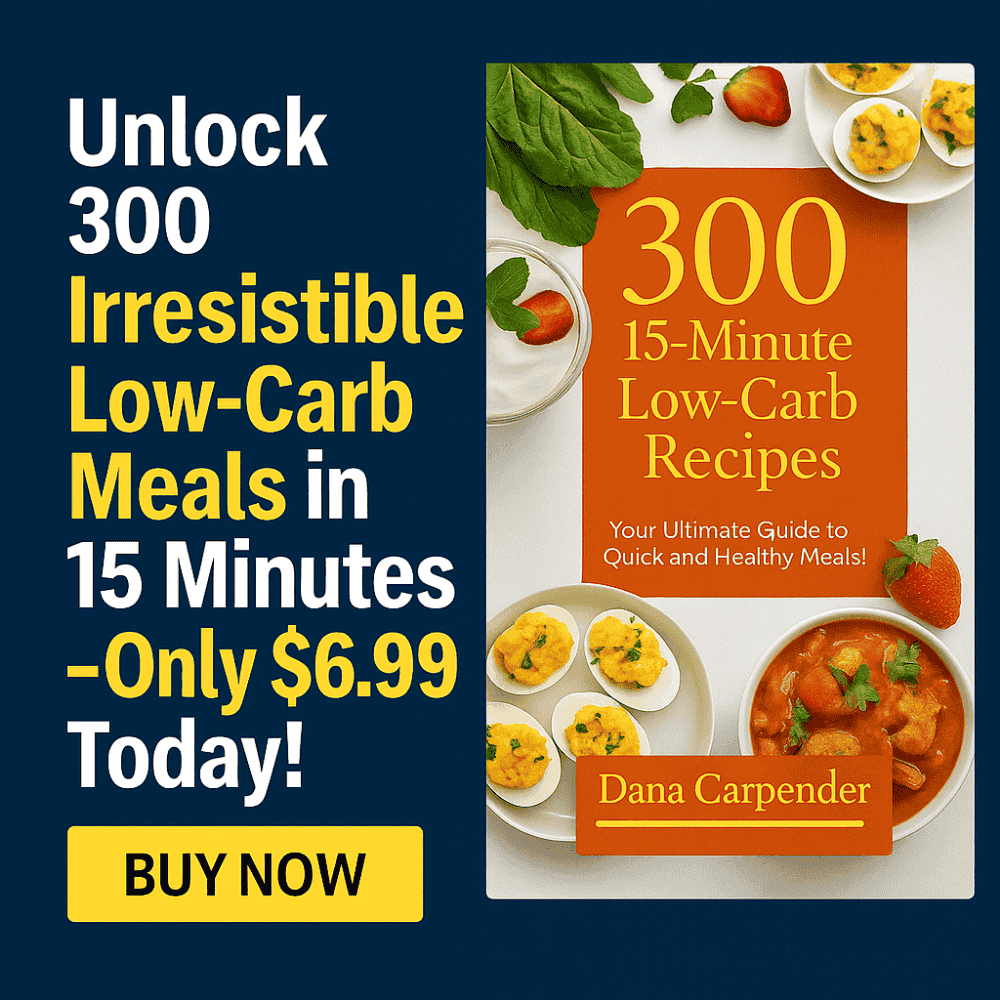
Fuel your busy life with flavor and health—no more sacrificing taste for time! 300 15-Minute Low-Carb Recipes is your go-to kitchen companion, packed with hundreds of mouthwatering dishes that fit perfectly into any schedule and any low-carb lifestyle. From zesty breakfasts and sizzling skillet suppers to guilt-free desserts and power-packed smoothies, every recipe is rigorously tested to come together in just 15 minutes (prep and cook included), so you can spend more time enjoying your meal—and less time in the kitchen.
- Speedy & Simple – Say goodbye to long ingredient lists and complicated steps. Each recipe uses accessible ingredients and straightforward techniques to deliver maximum flavor in minimum time.
- Endless Variety – Whip up everything from savory egg creations, gourmet burgers, and vibrant salads to indulgent, low-carb snacks and everyday favorites reinvented.
- Family-Friendly Flexibility – Keep your carb-count in check while still satisfying even the pickiest eaters—plus, tips for easy sides and swaps so everyone at the table can dig in.
- Nutrition You Can Trust – Detailed counts for carbs, fiber, and protein, plus expert advice on label-reading, smart pantry staples, and quick-prep hacks to keep your meals fast, healthy, and delicious.
Ready, set, cook—and reclaim your time and your health.


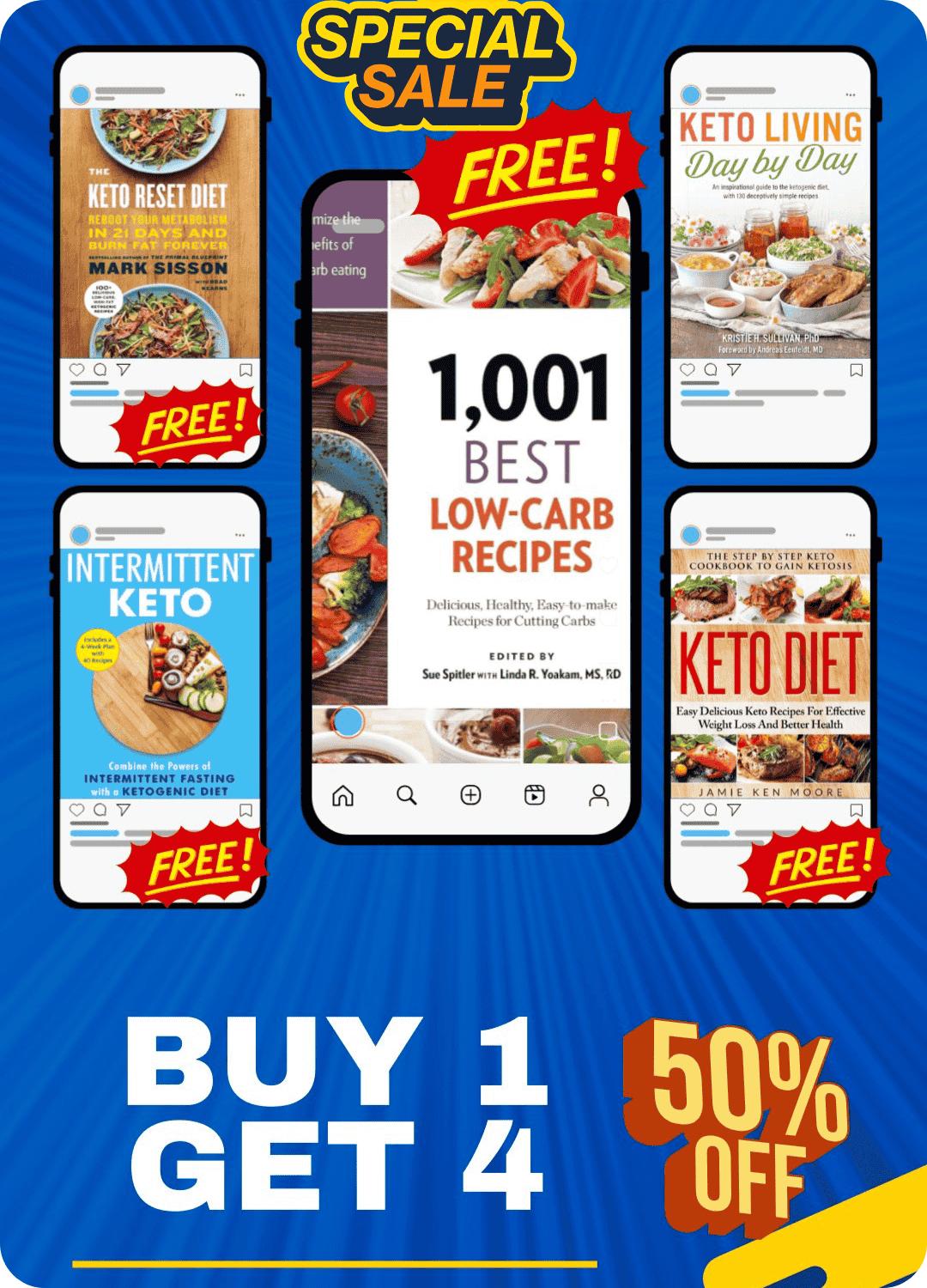
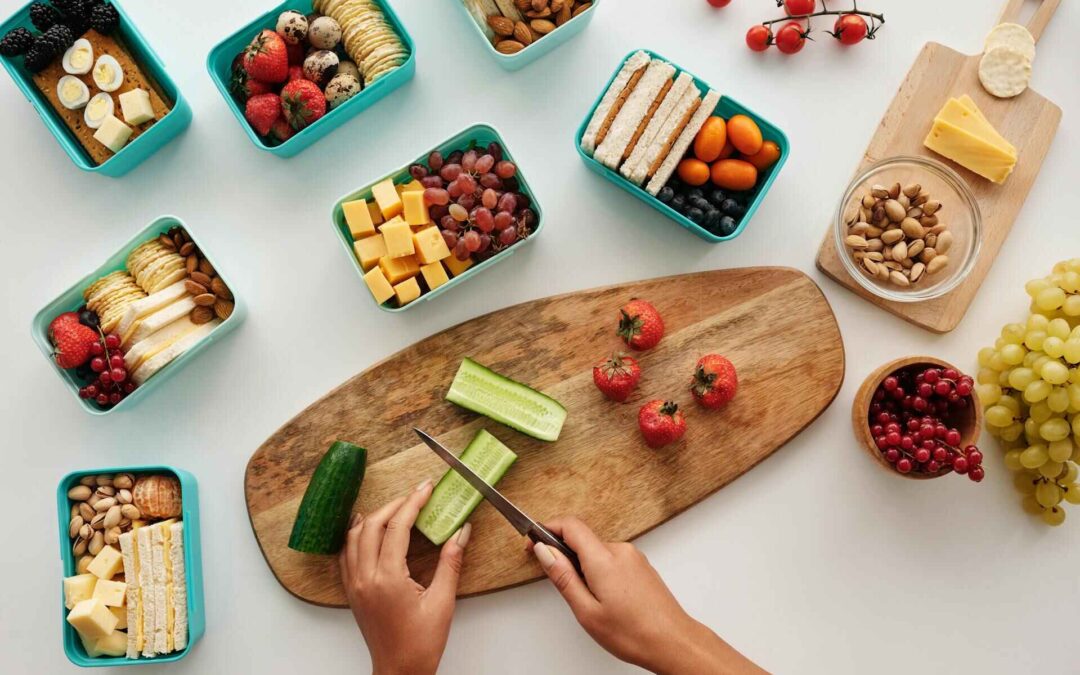
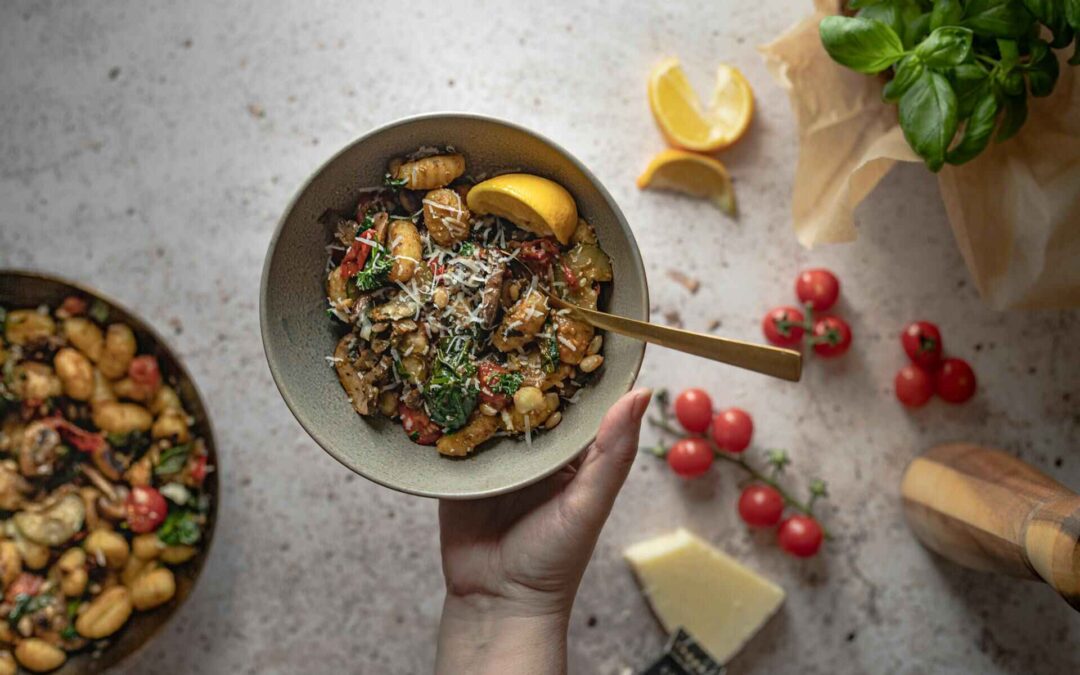

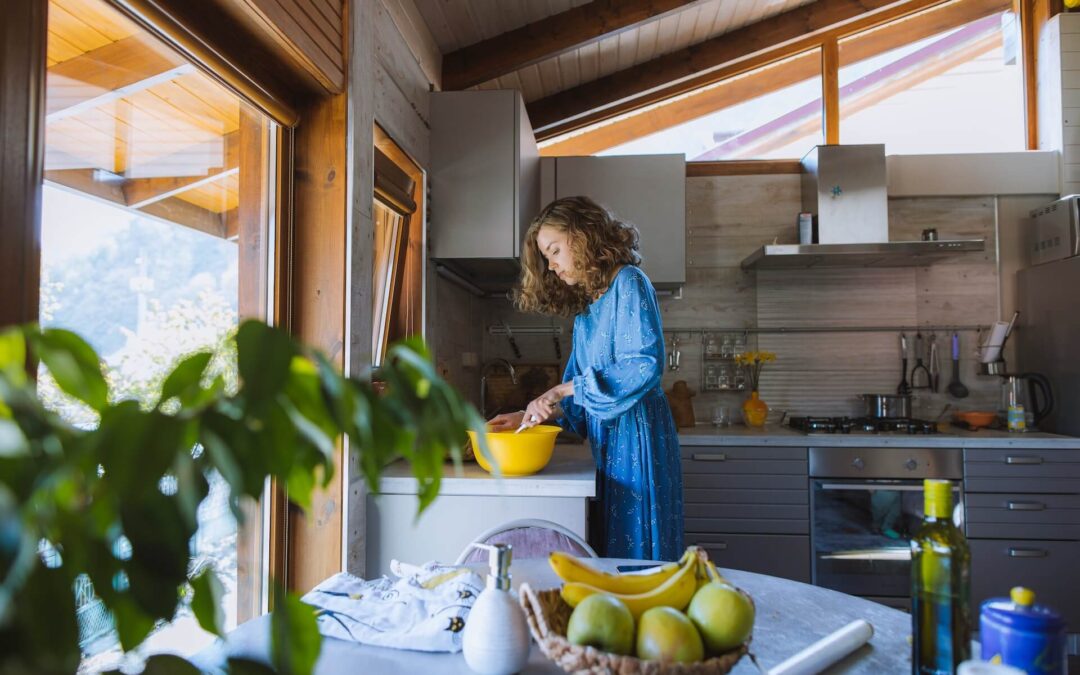
I’m really impressed with your writing skills and also with the layout on your weblog. Is this a paid theme or did you customize it yourself? Anyway keep up the nice quality writing, it’s rare to see a nice blog like this one nowadays..
Thank you so much for the lovely feedback! 💛 I’m really glad you’re enjoying both the content and the layout. I’m using my theme with a few custom tweaks to fit my style. It’s wonderful to hear that it’s making a good impression—it definitely motivates me to keep creating more! 🙌
I believe this web site has got some really excellent info for everyone :D. “Anybody who watches three games of football in a row should be declared brain dead.” by Erma Bombeck.
Thanks — I’m so glad you found the site useful! Love that Erma Bombeck line — classic Bombeck wit about football. Really appreciate you sharing it!